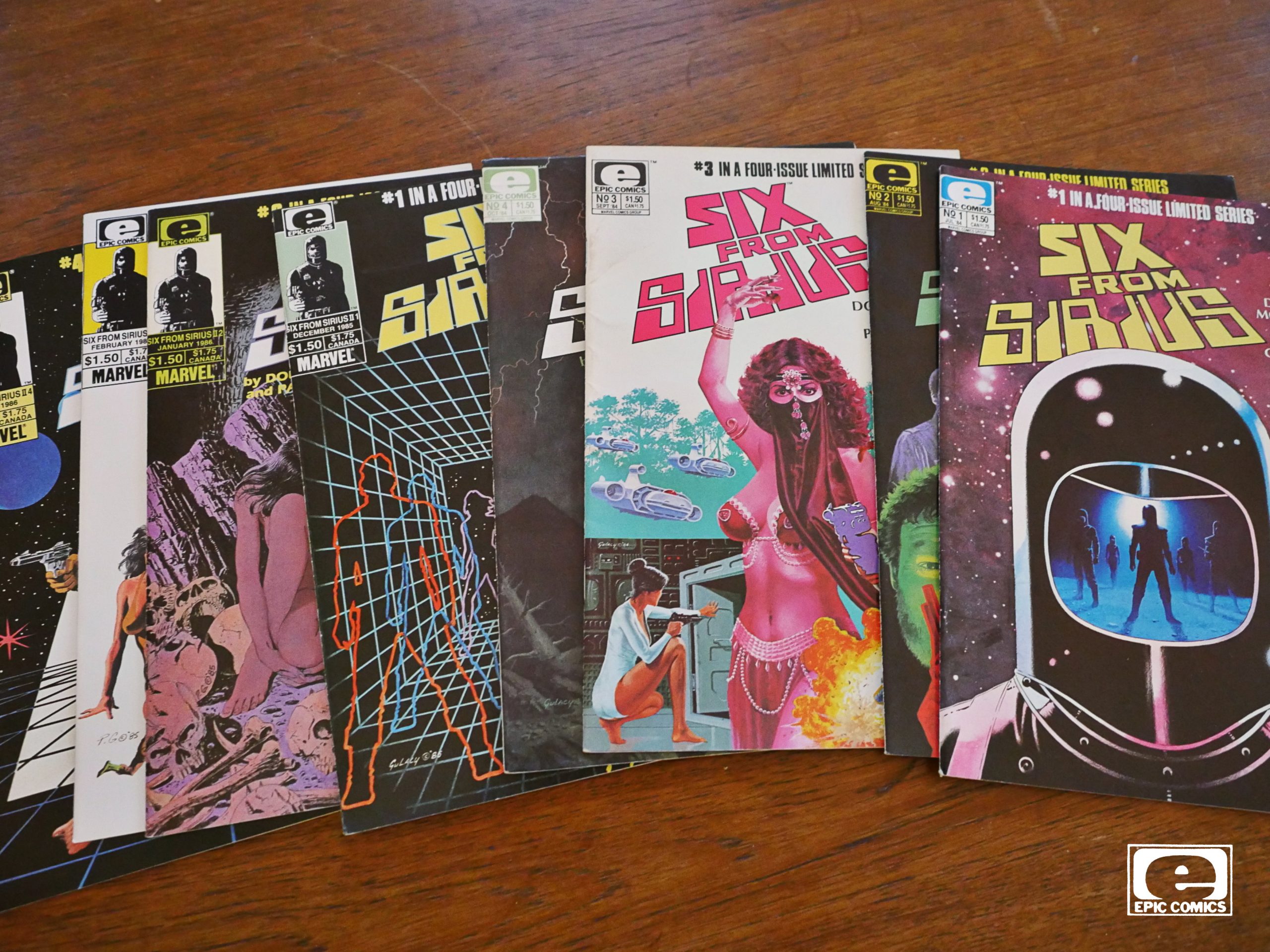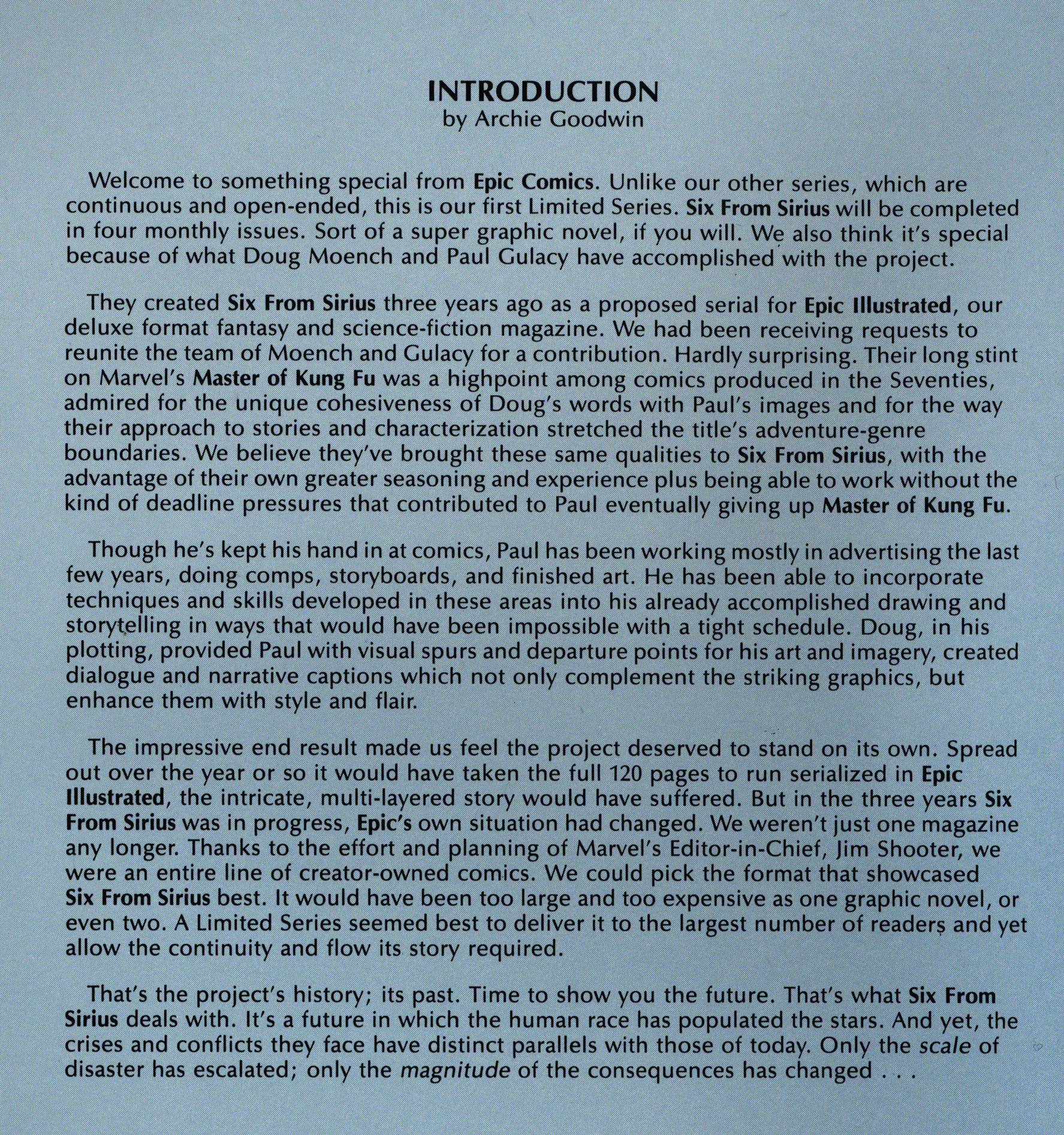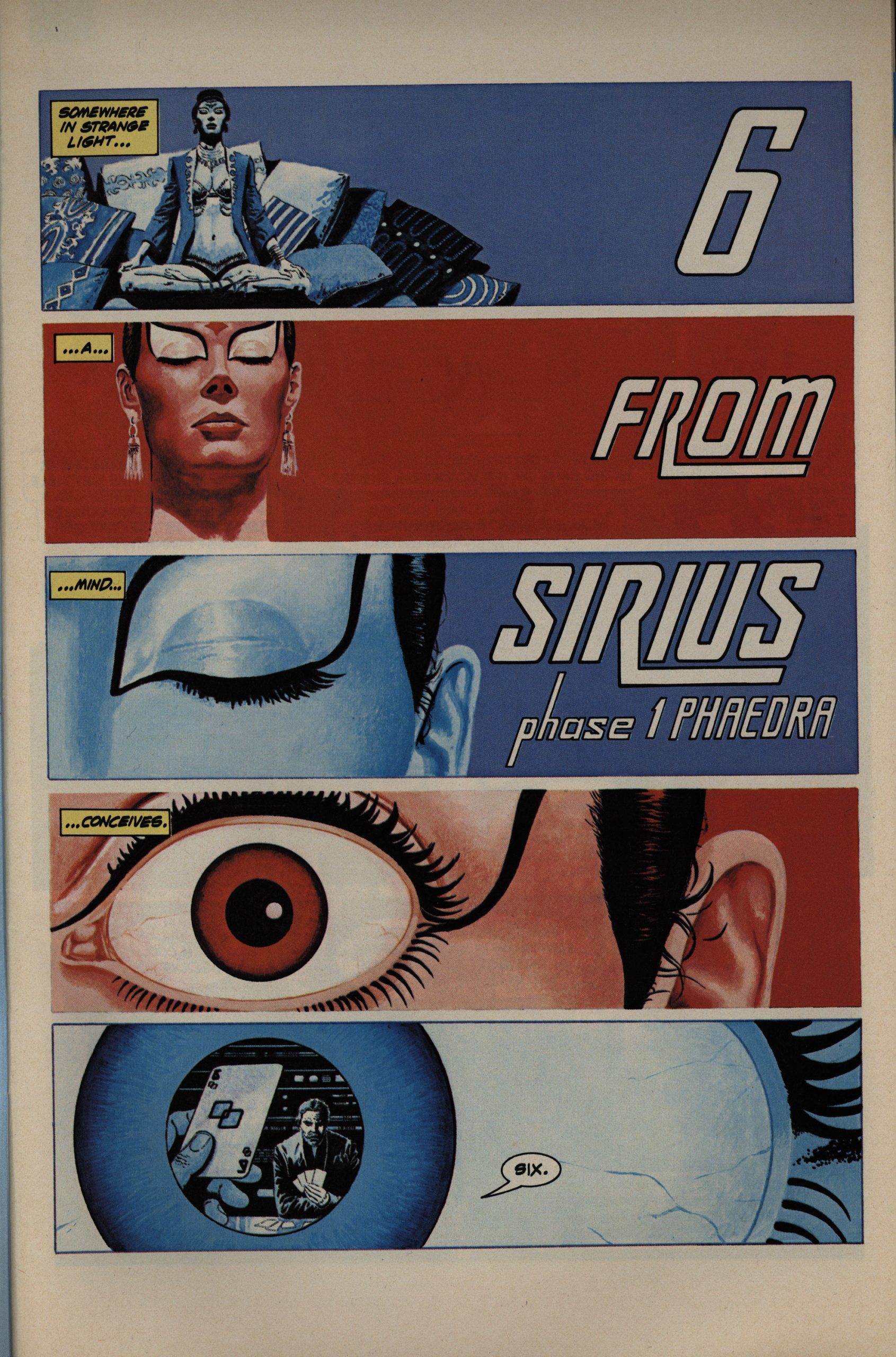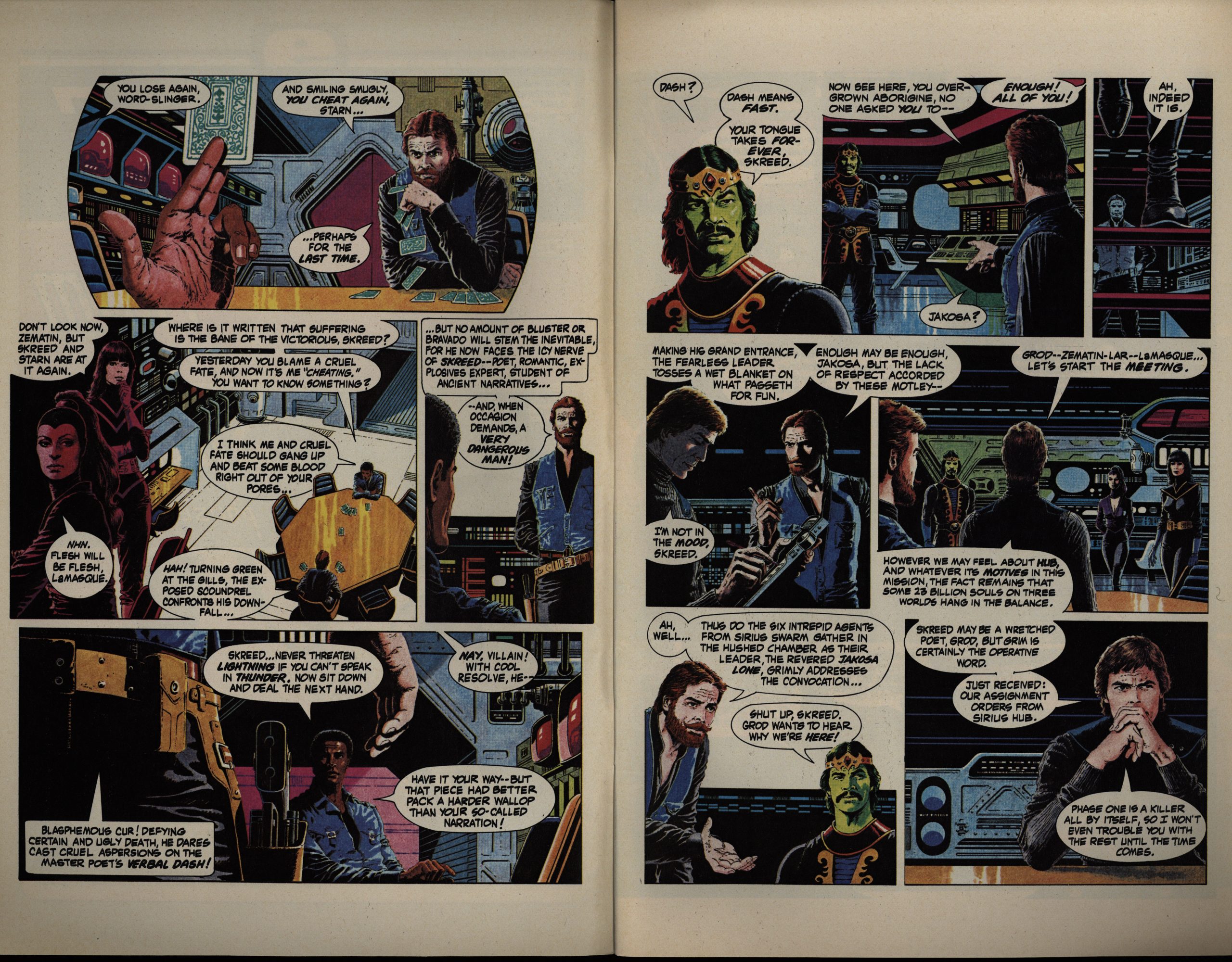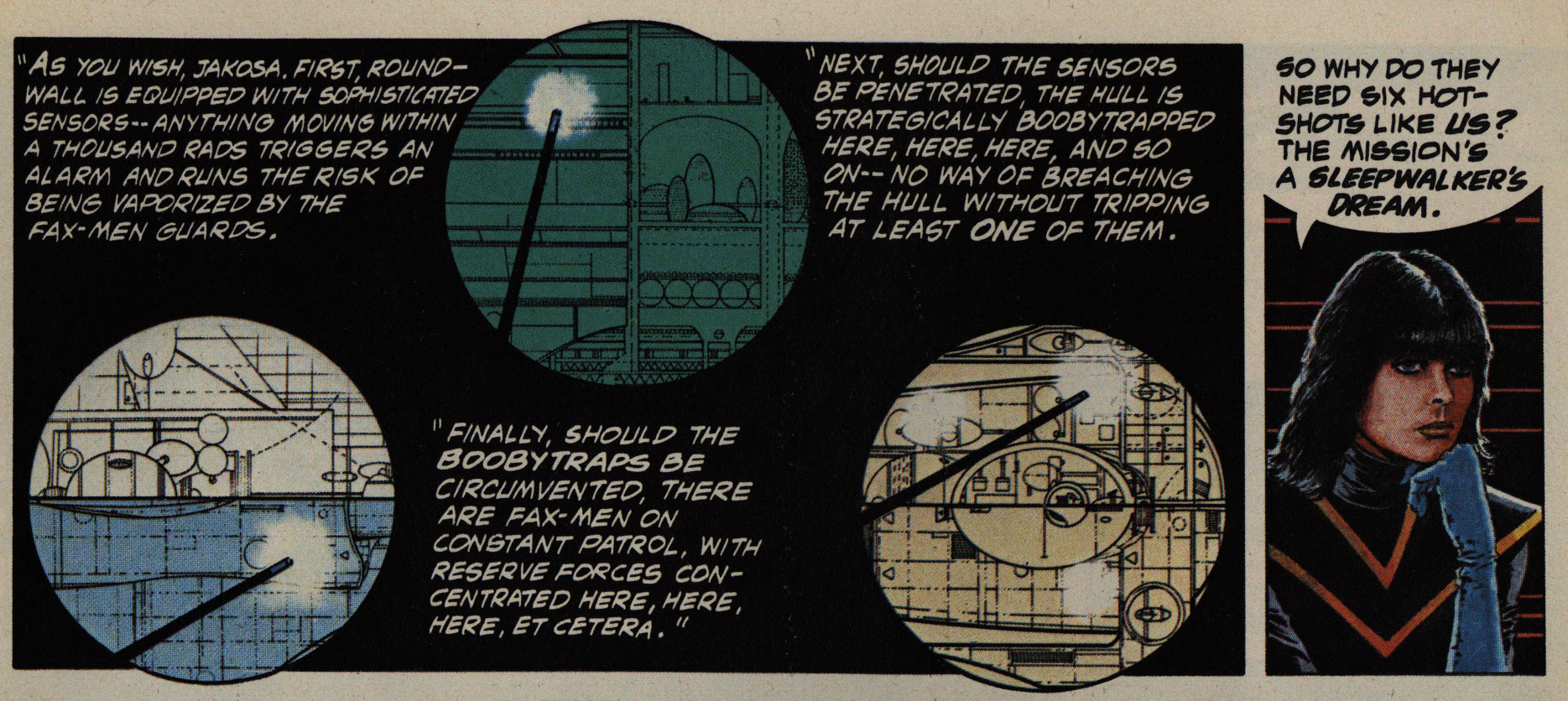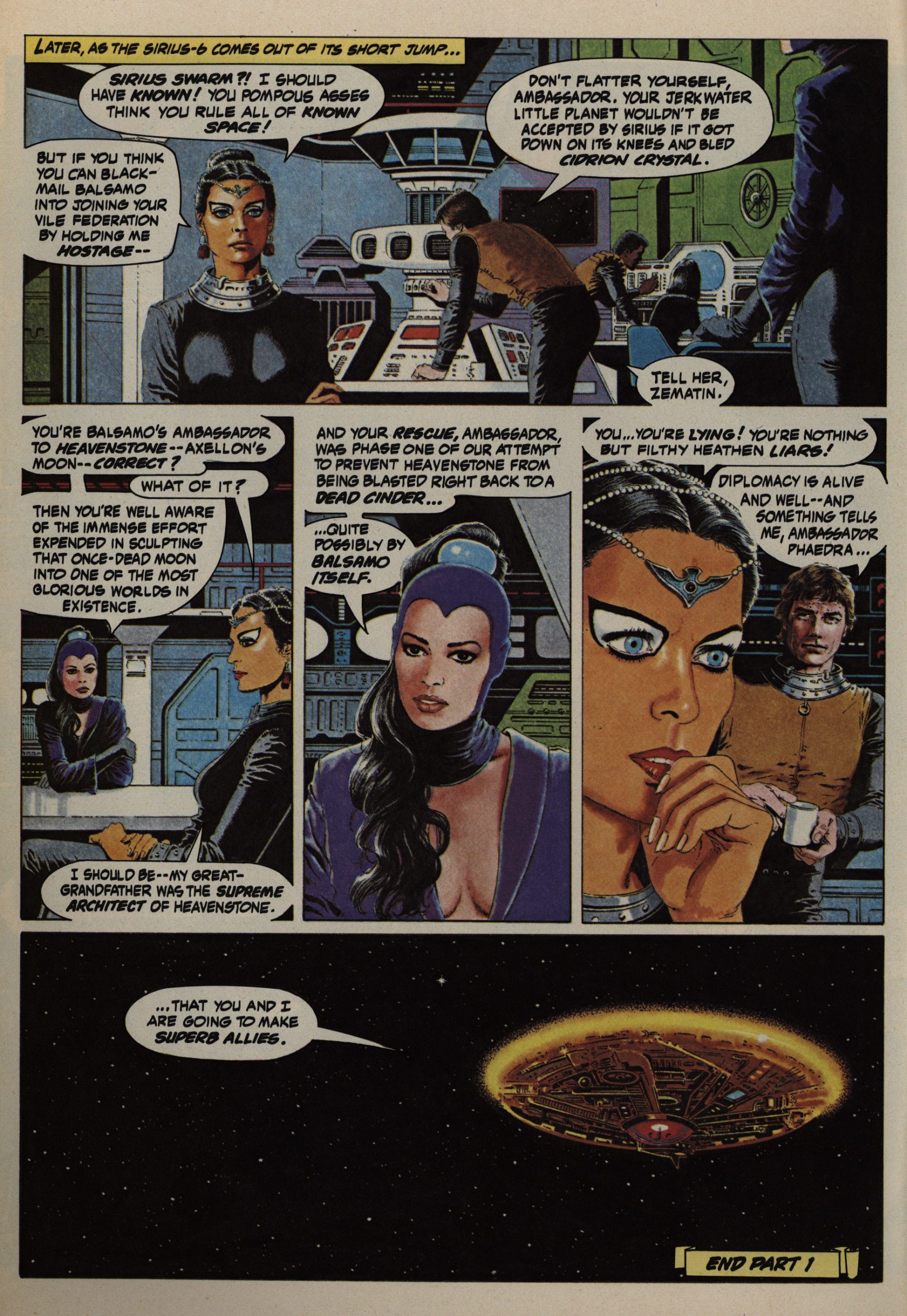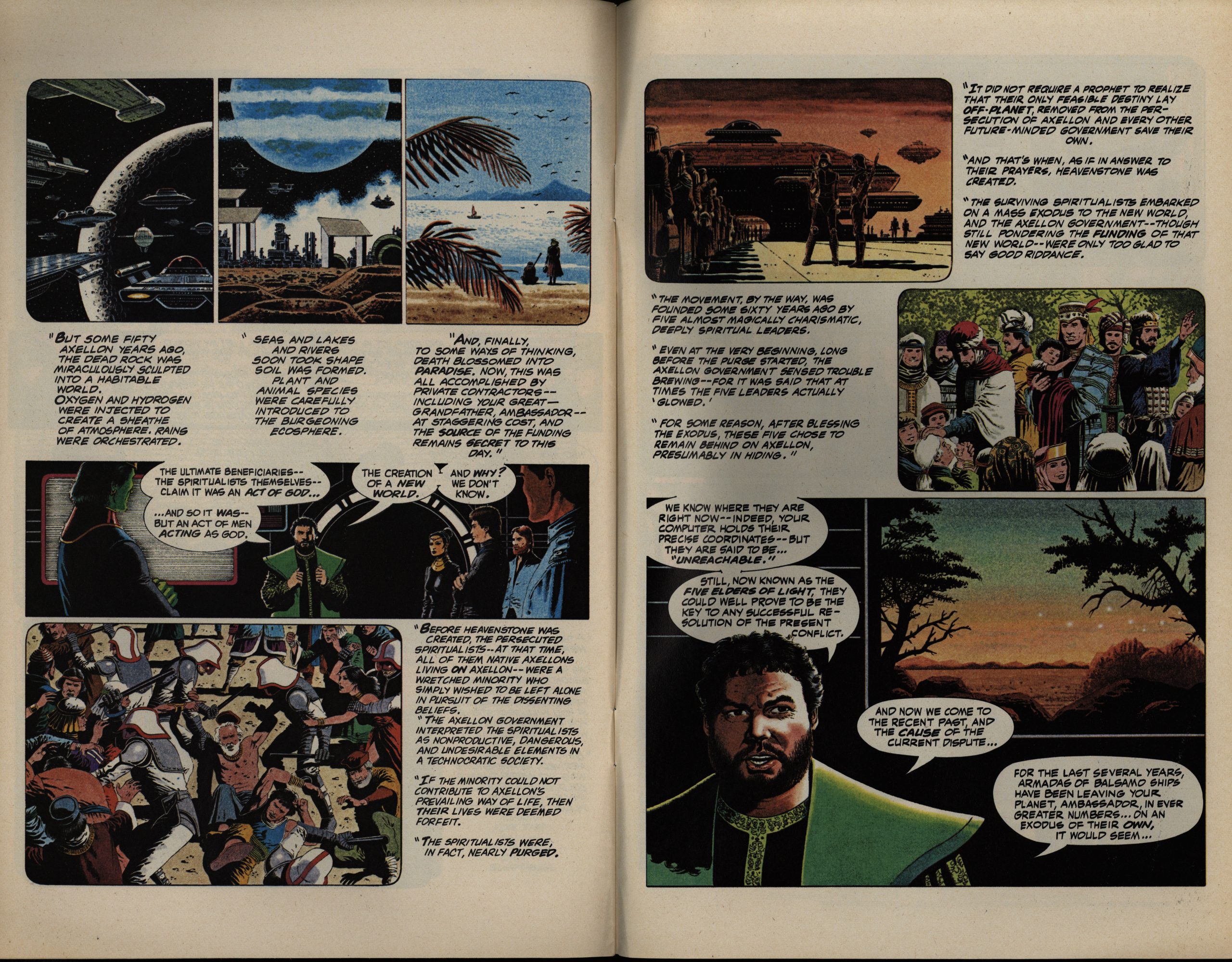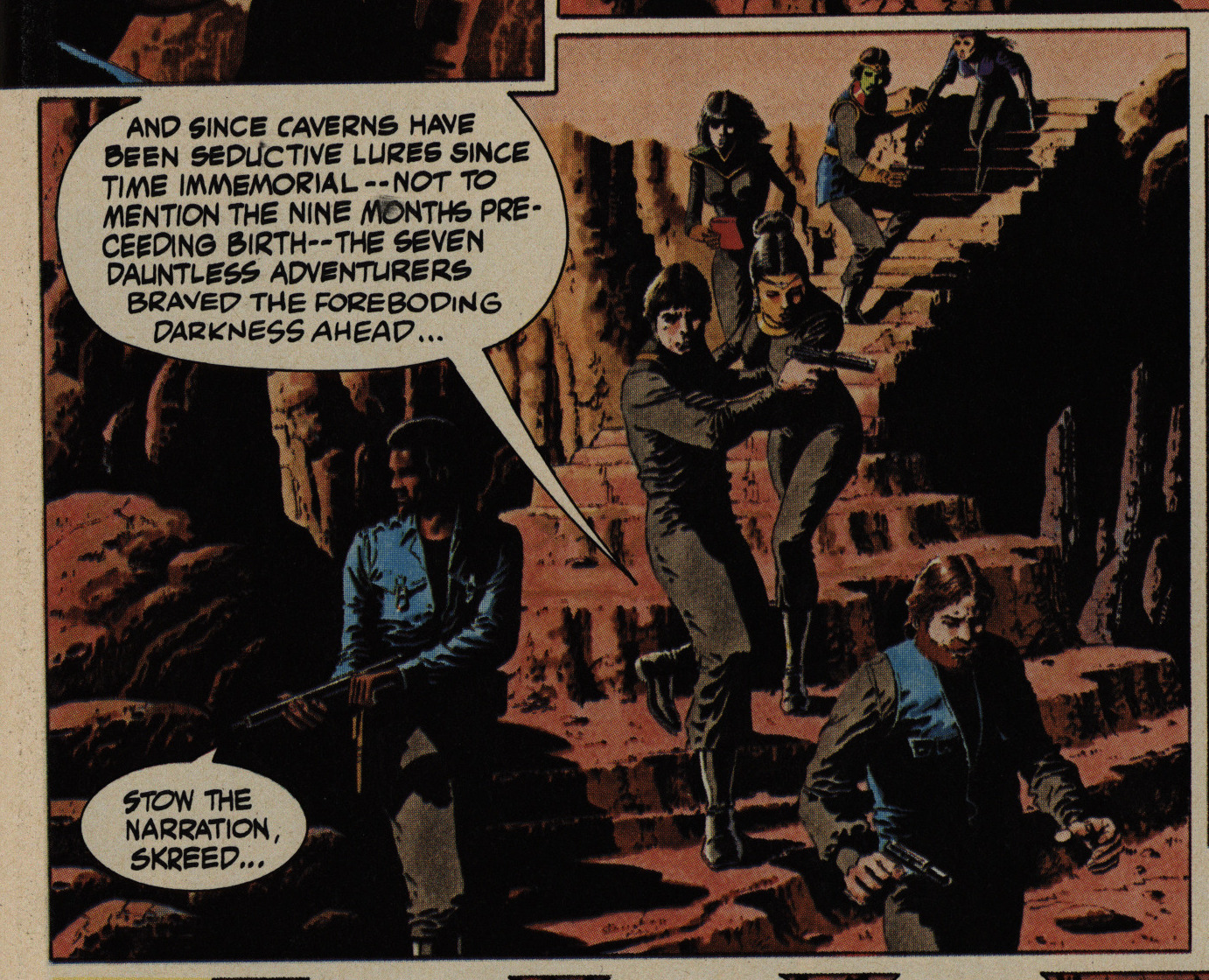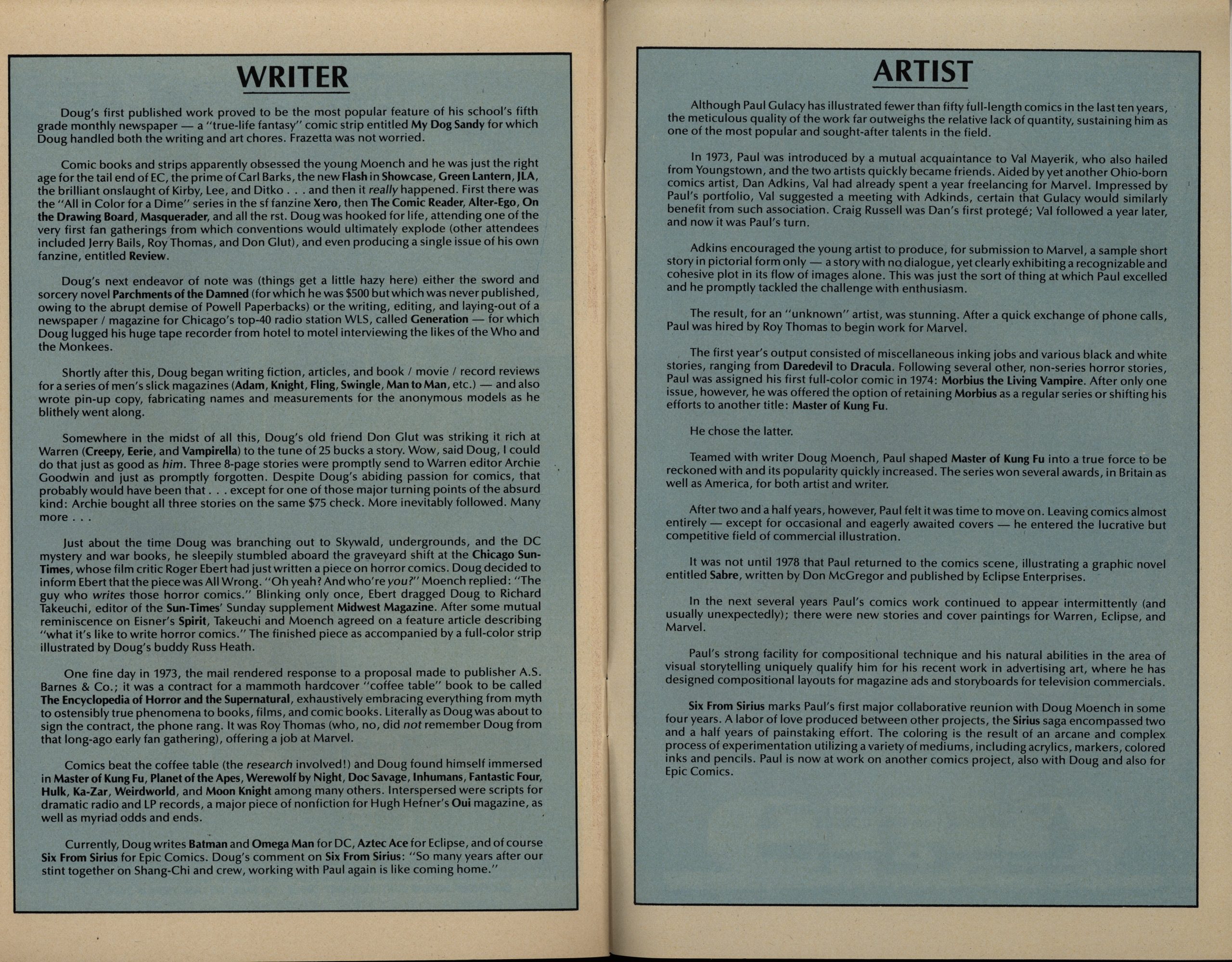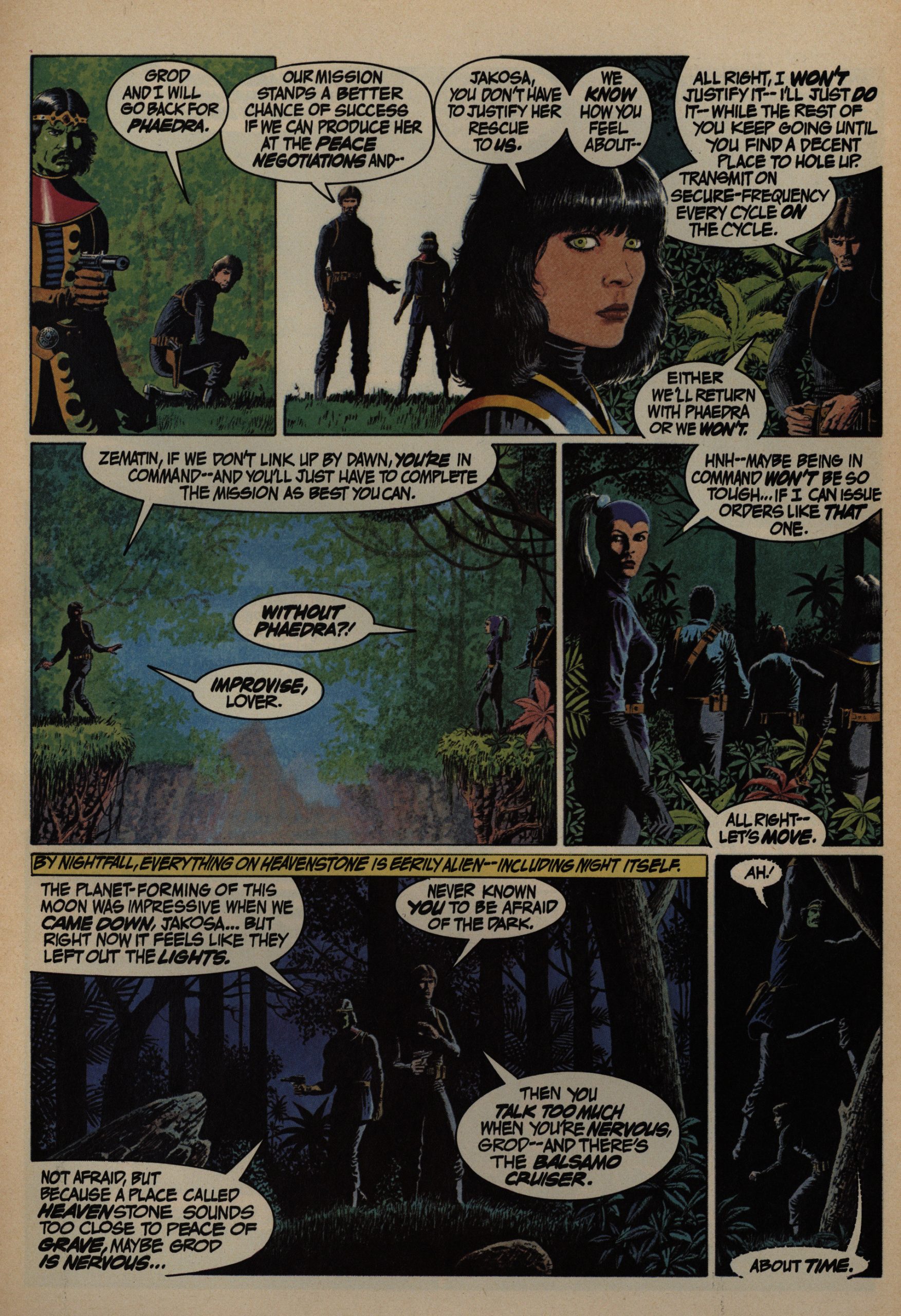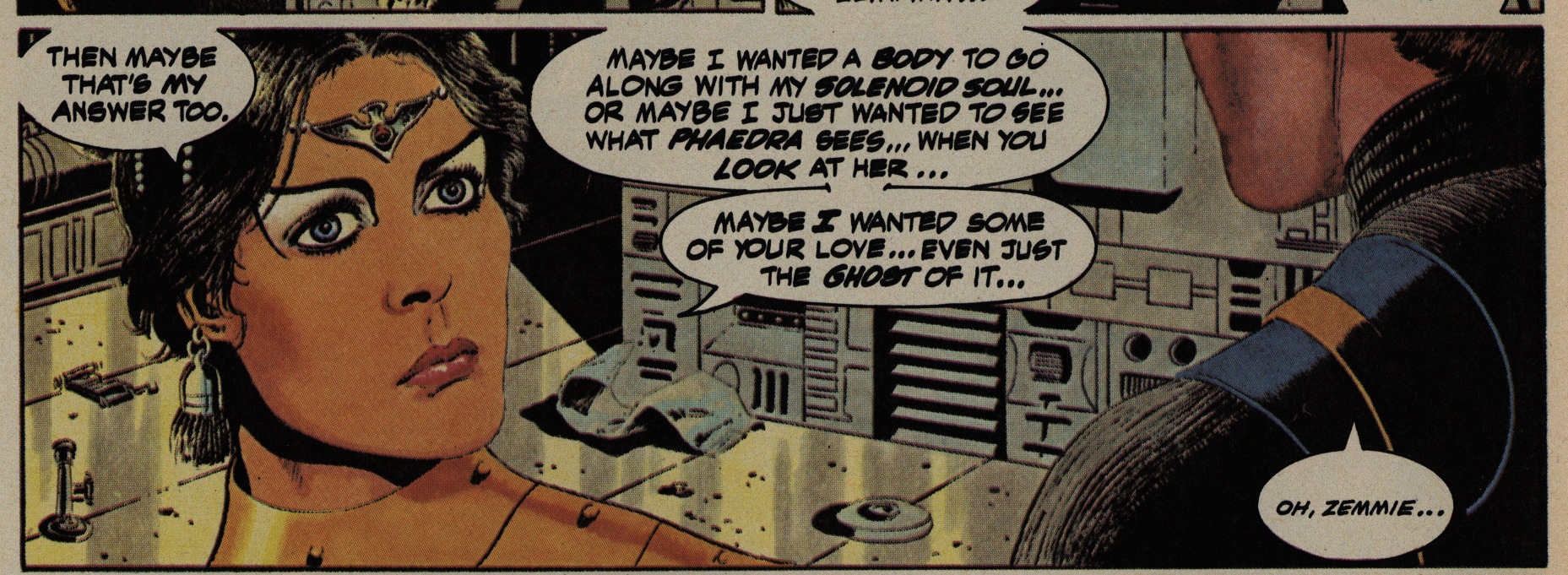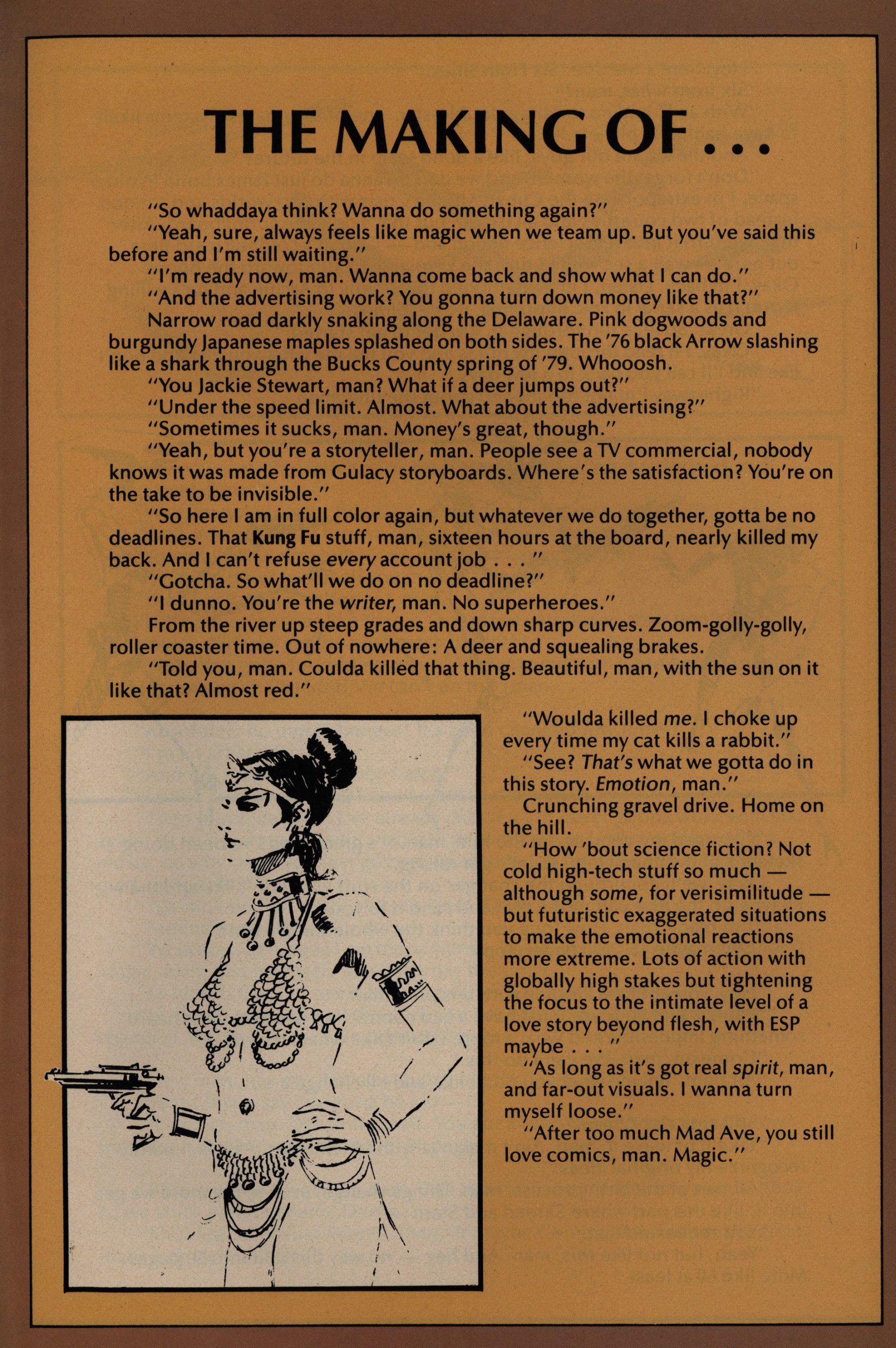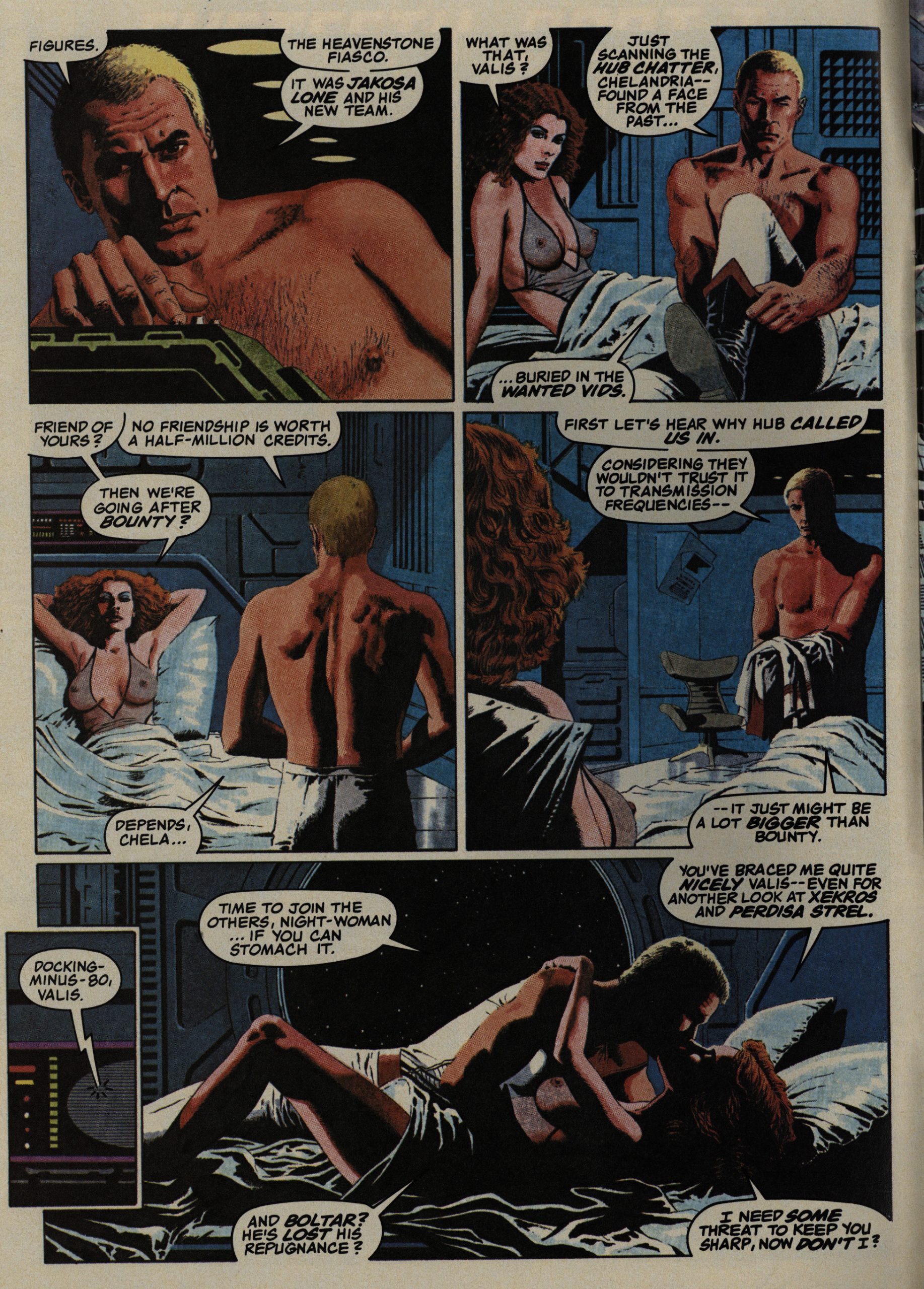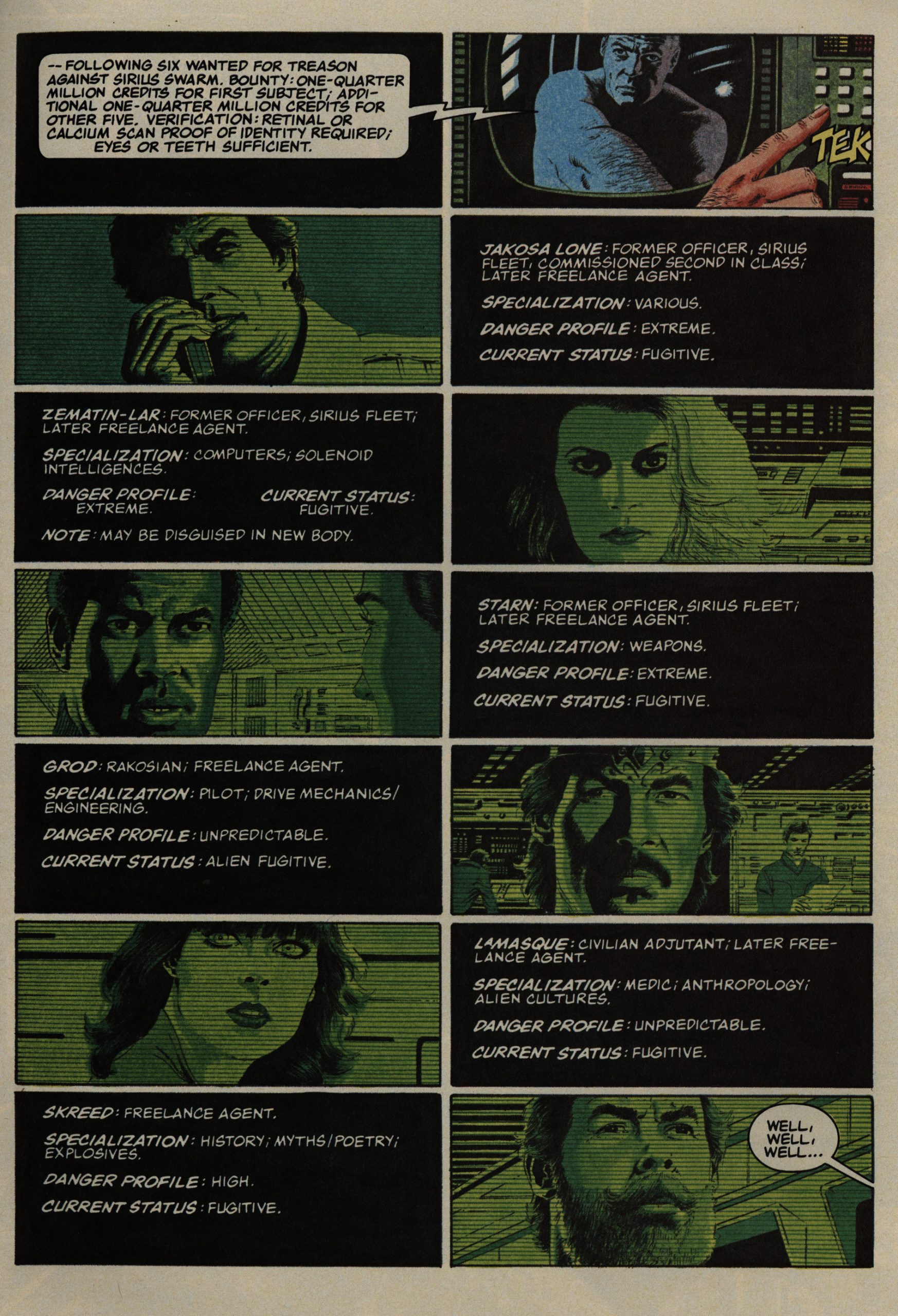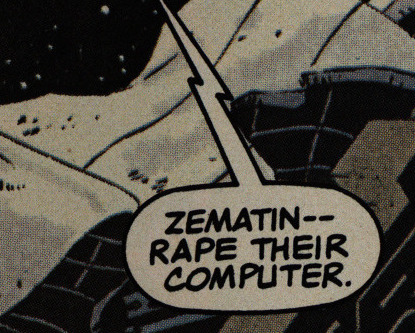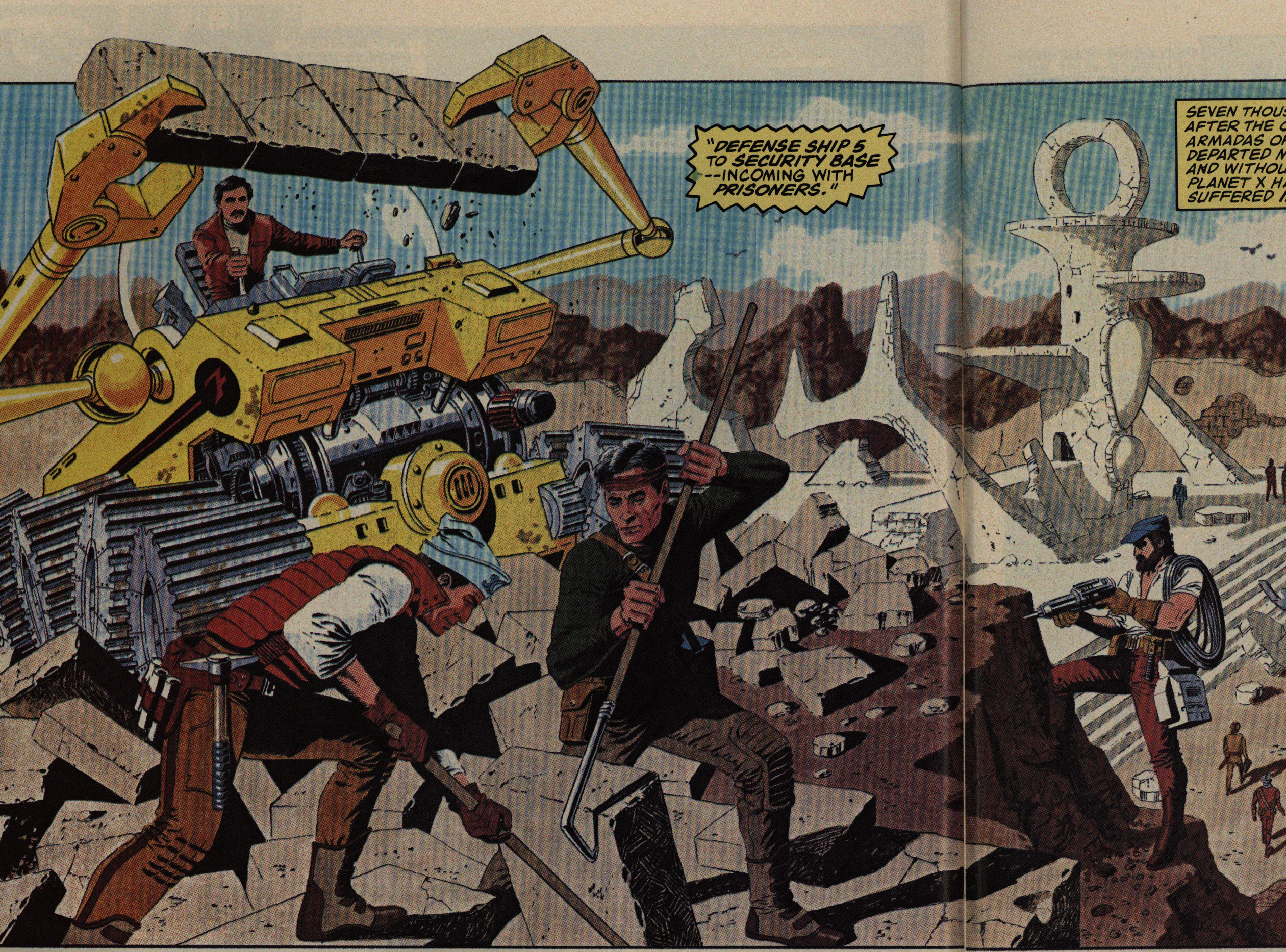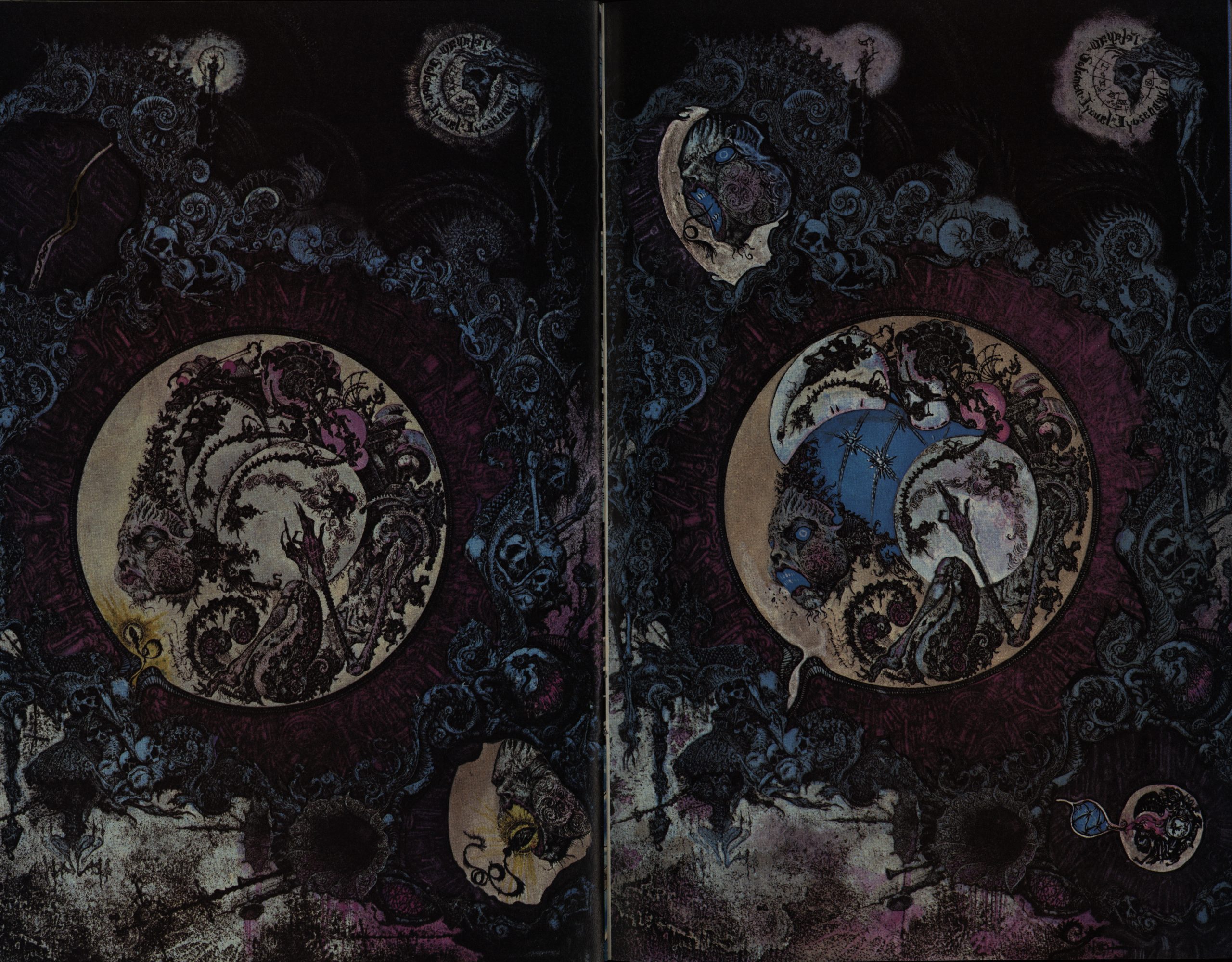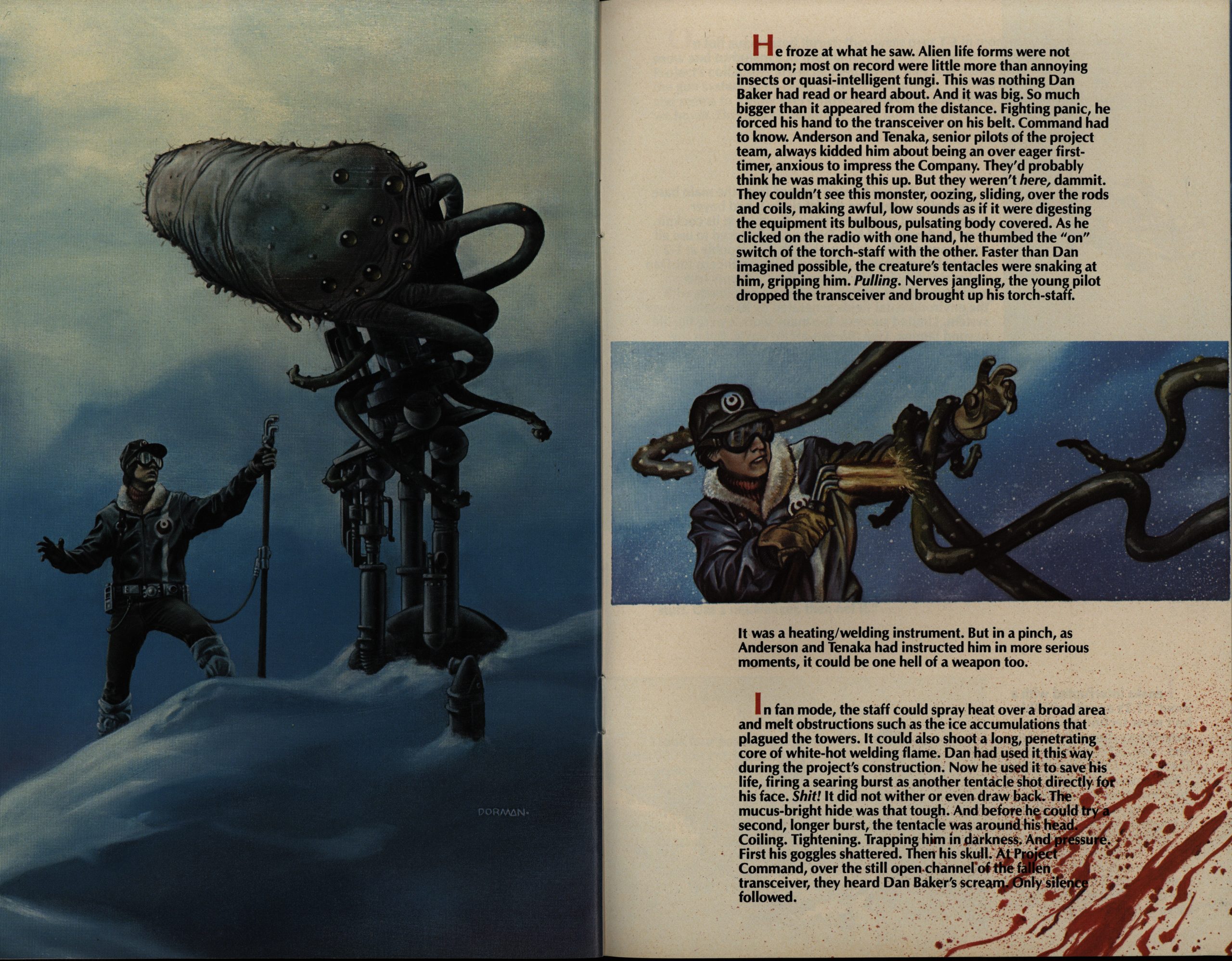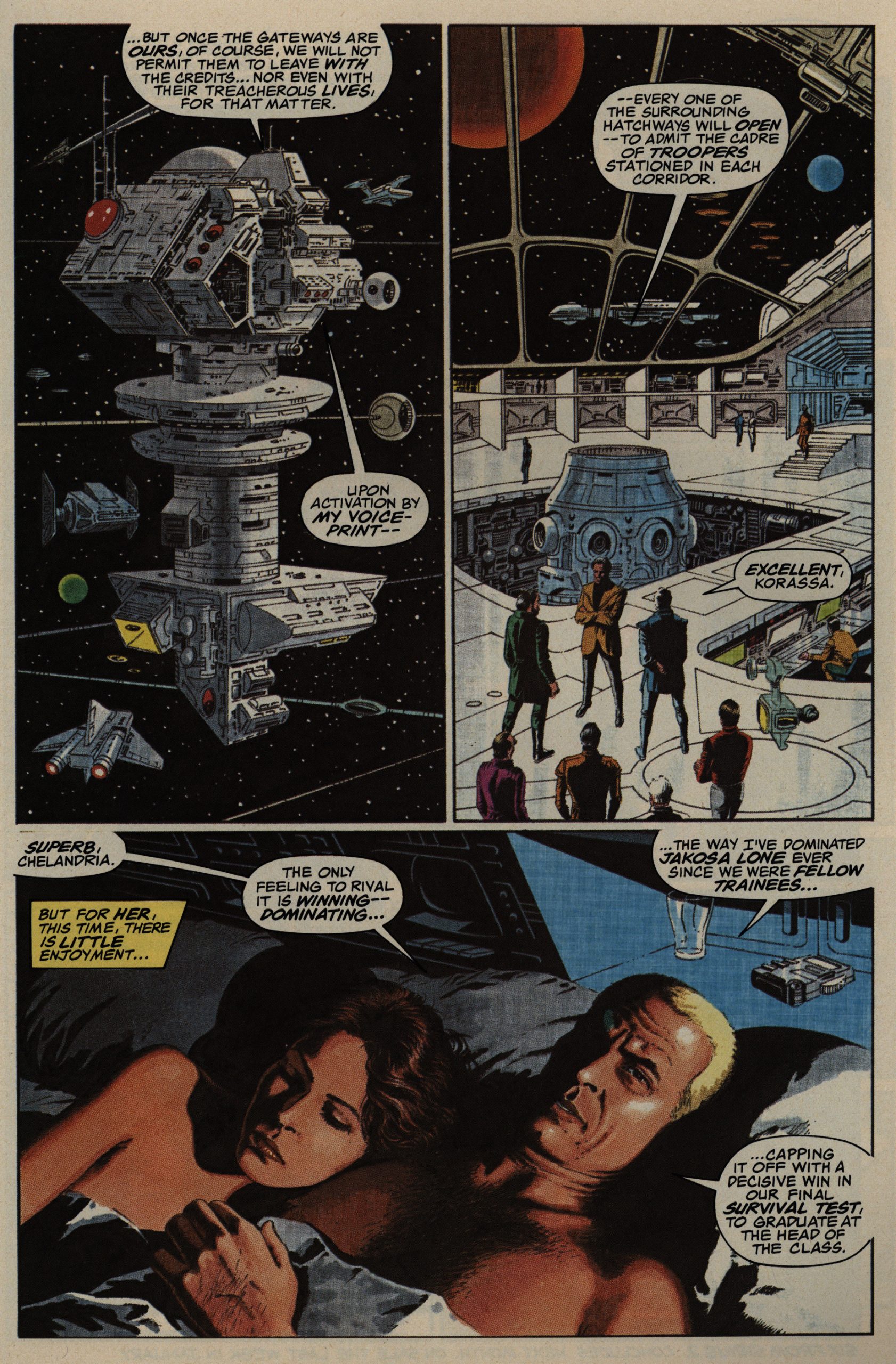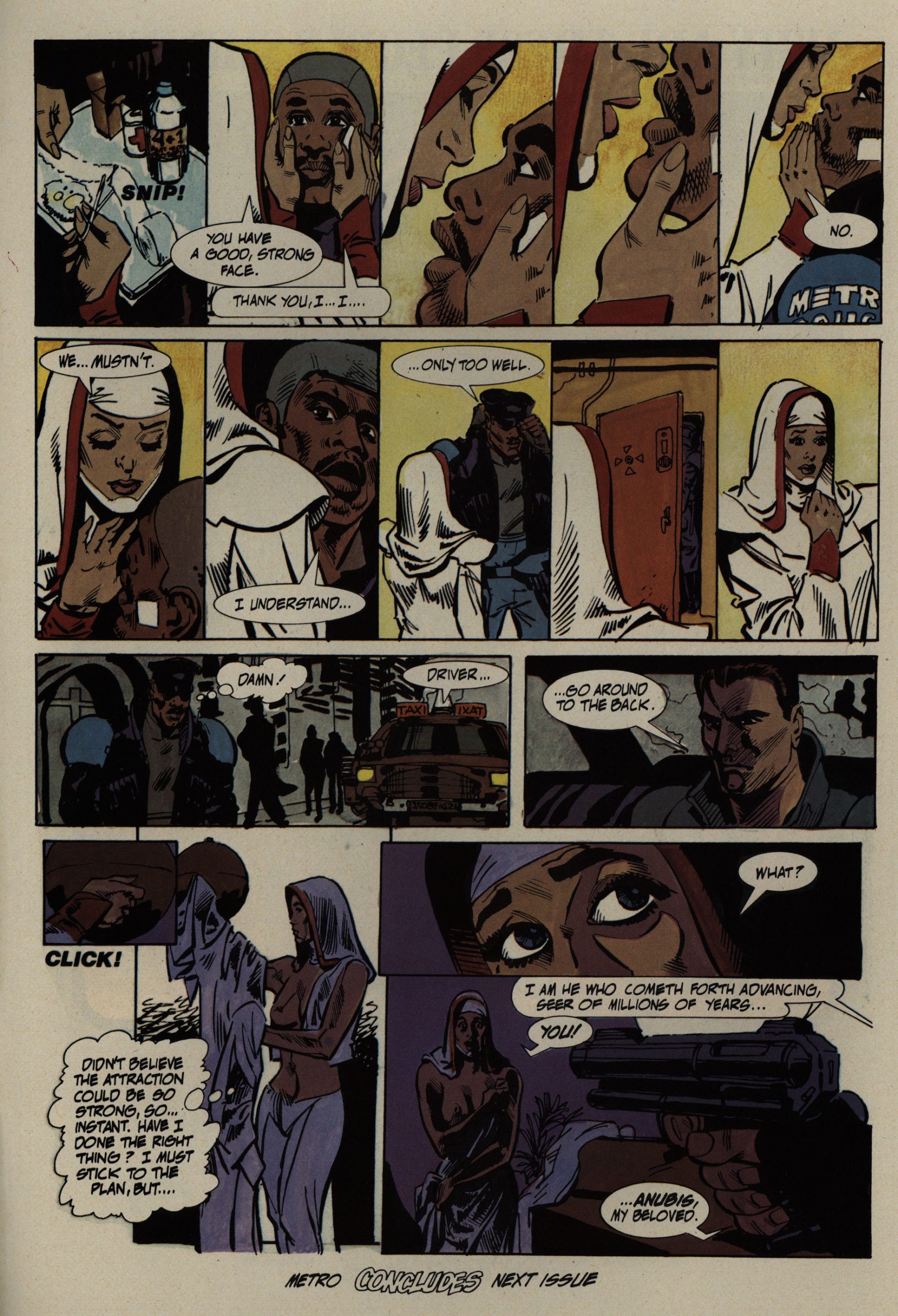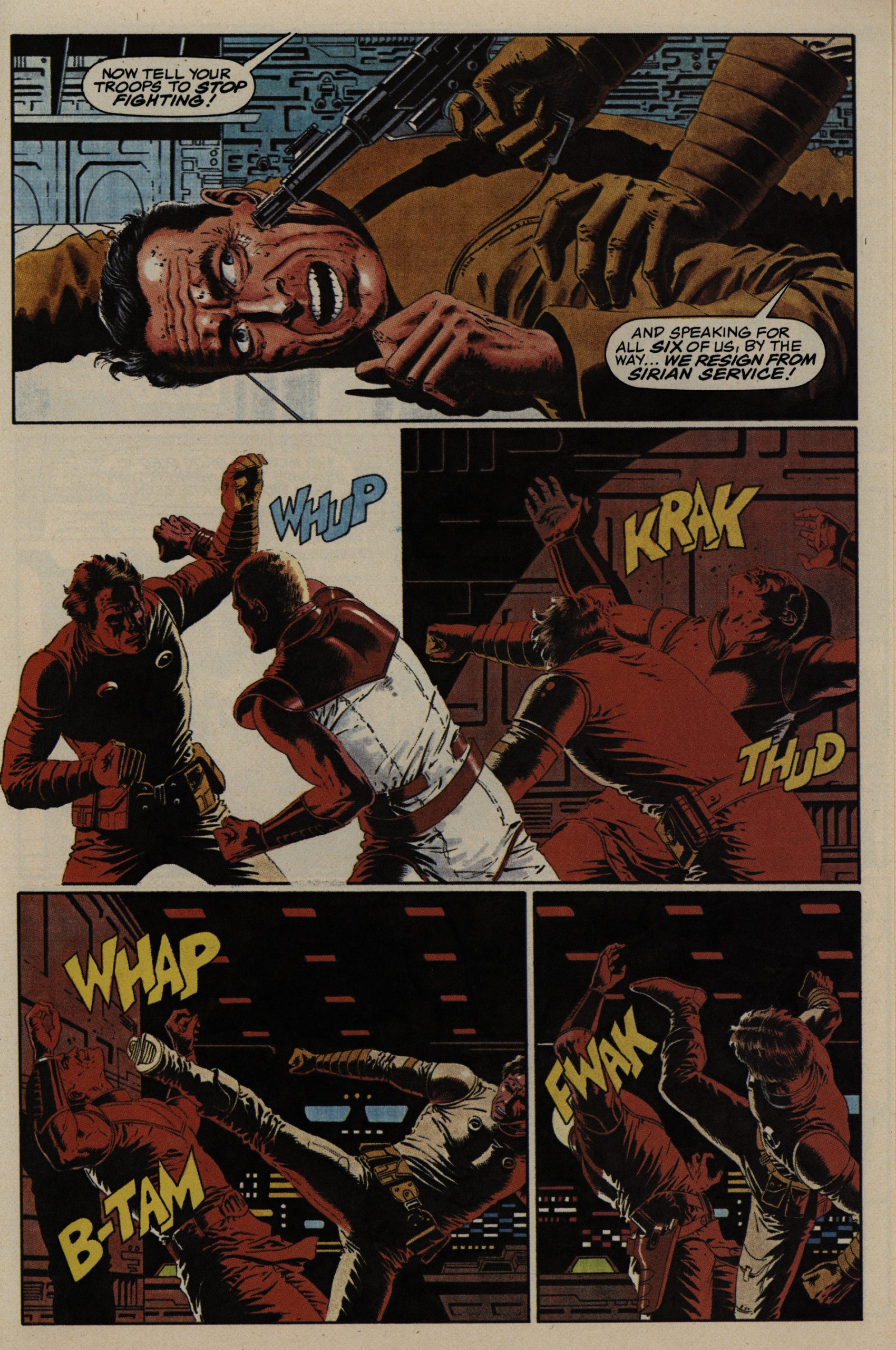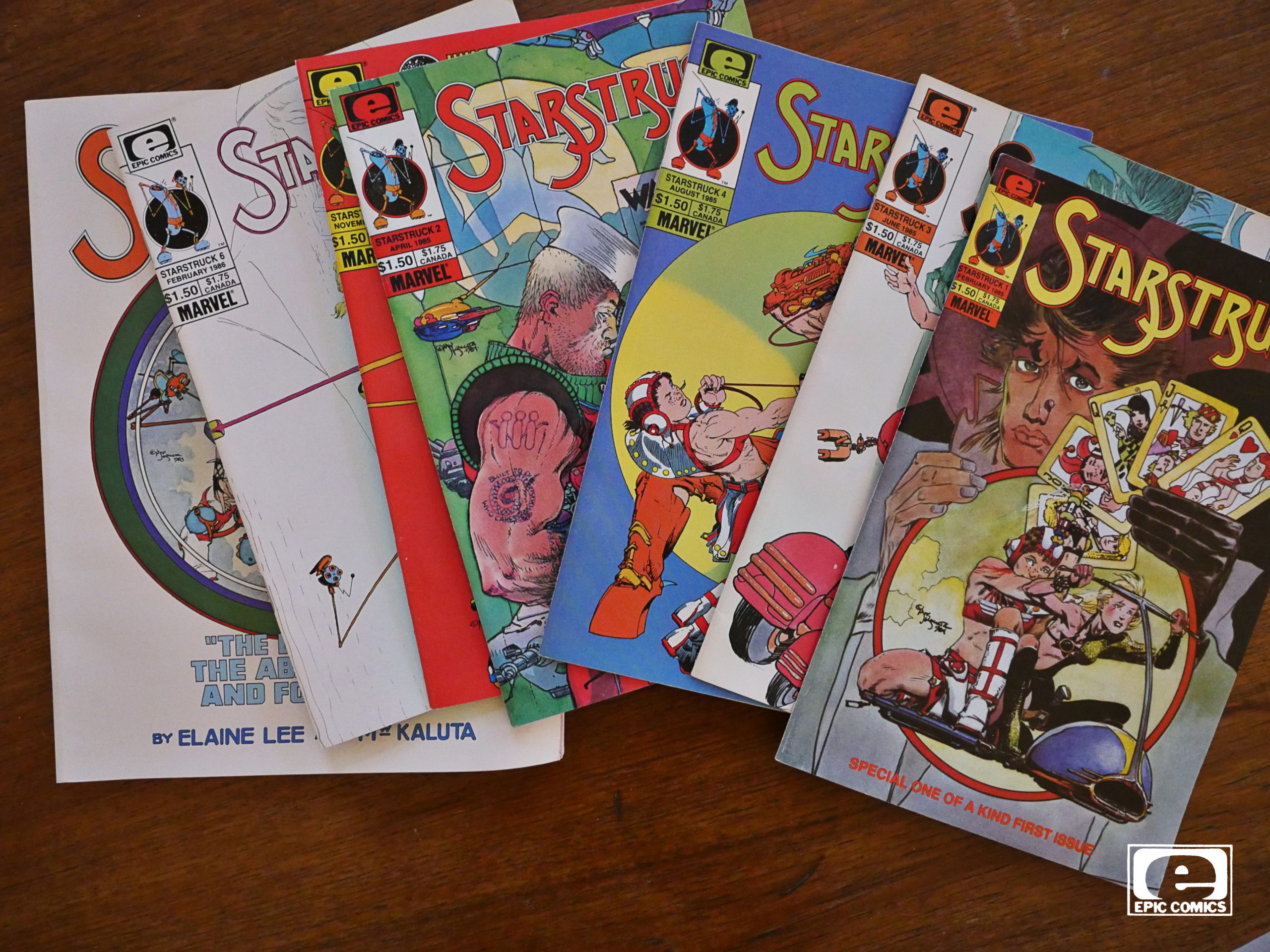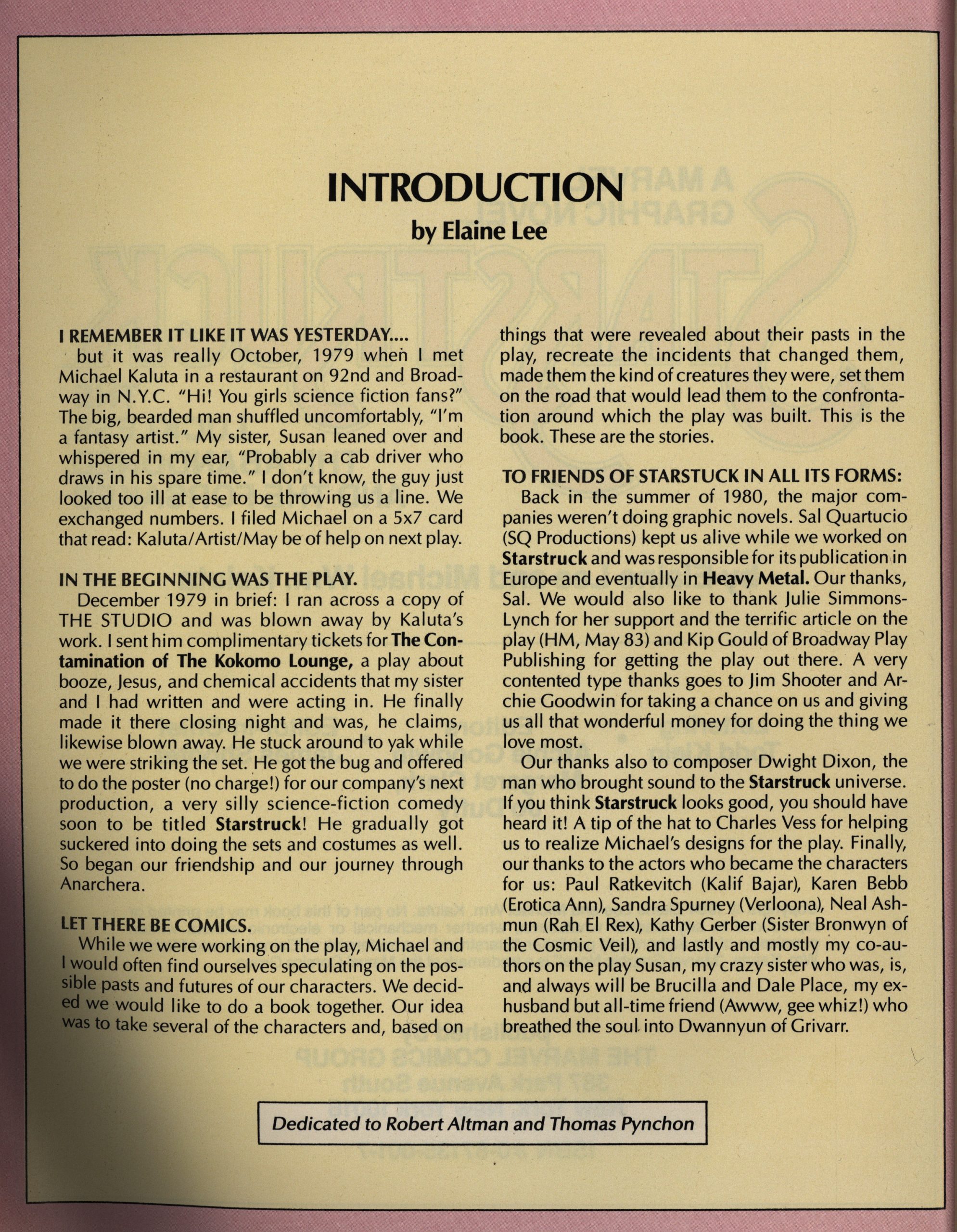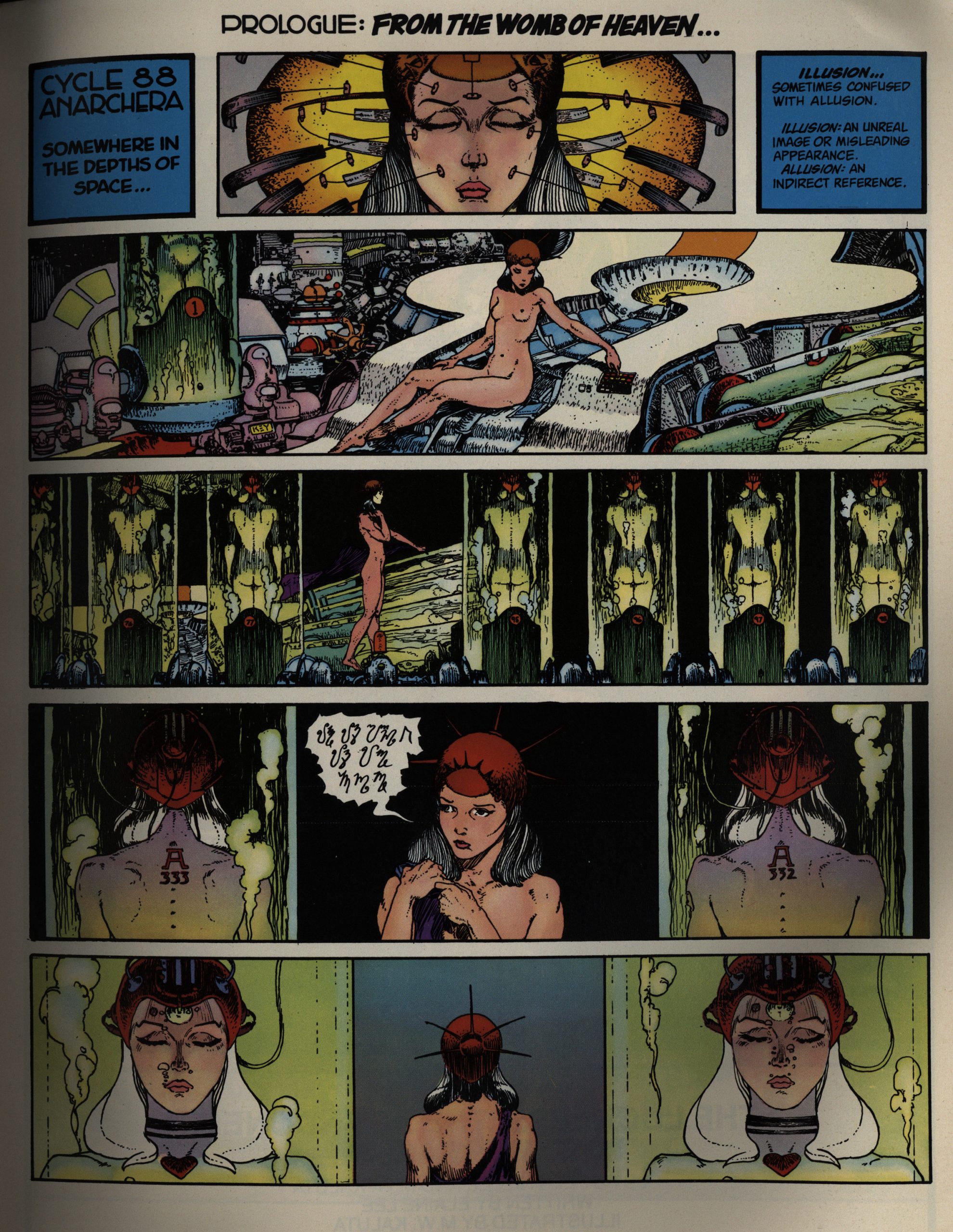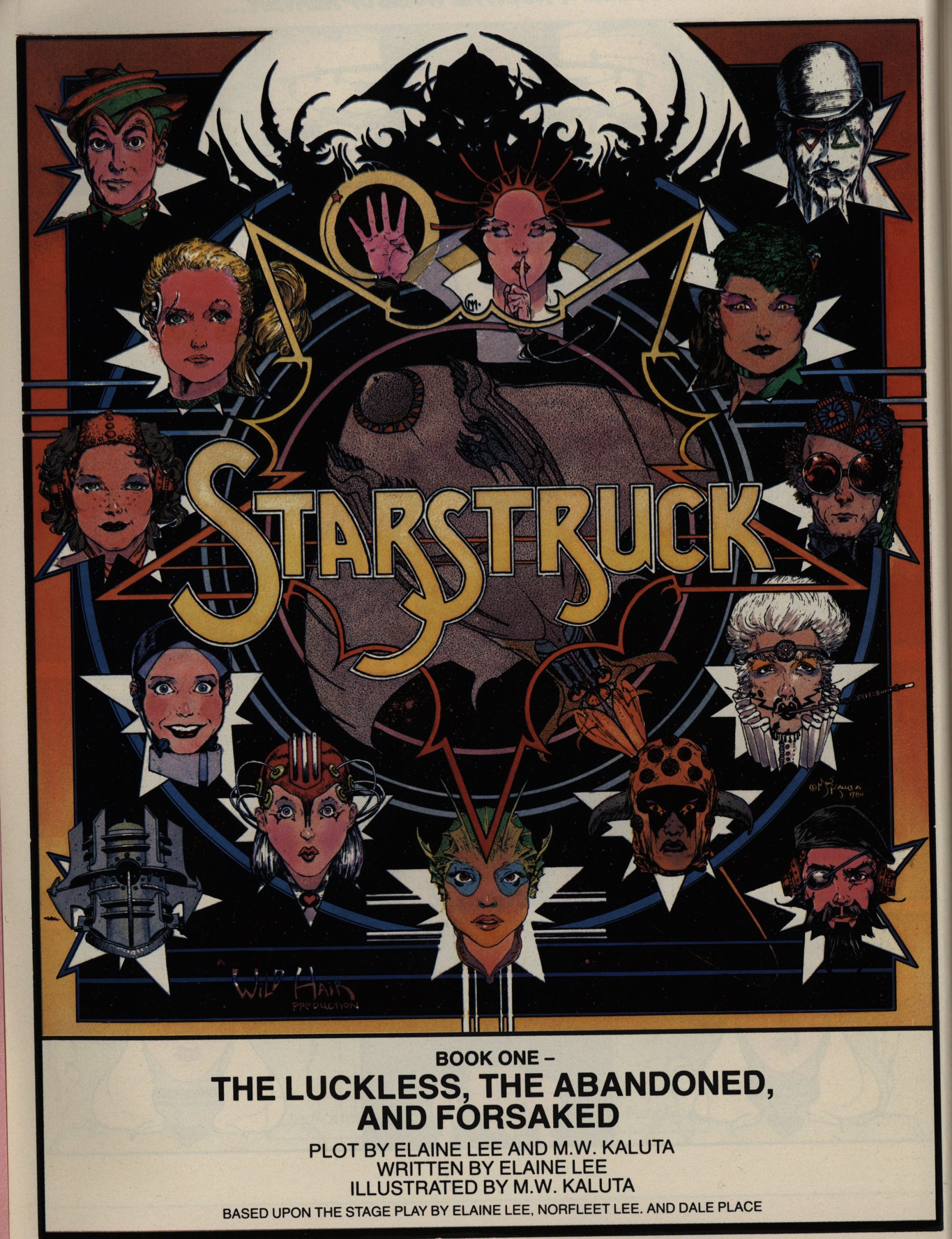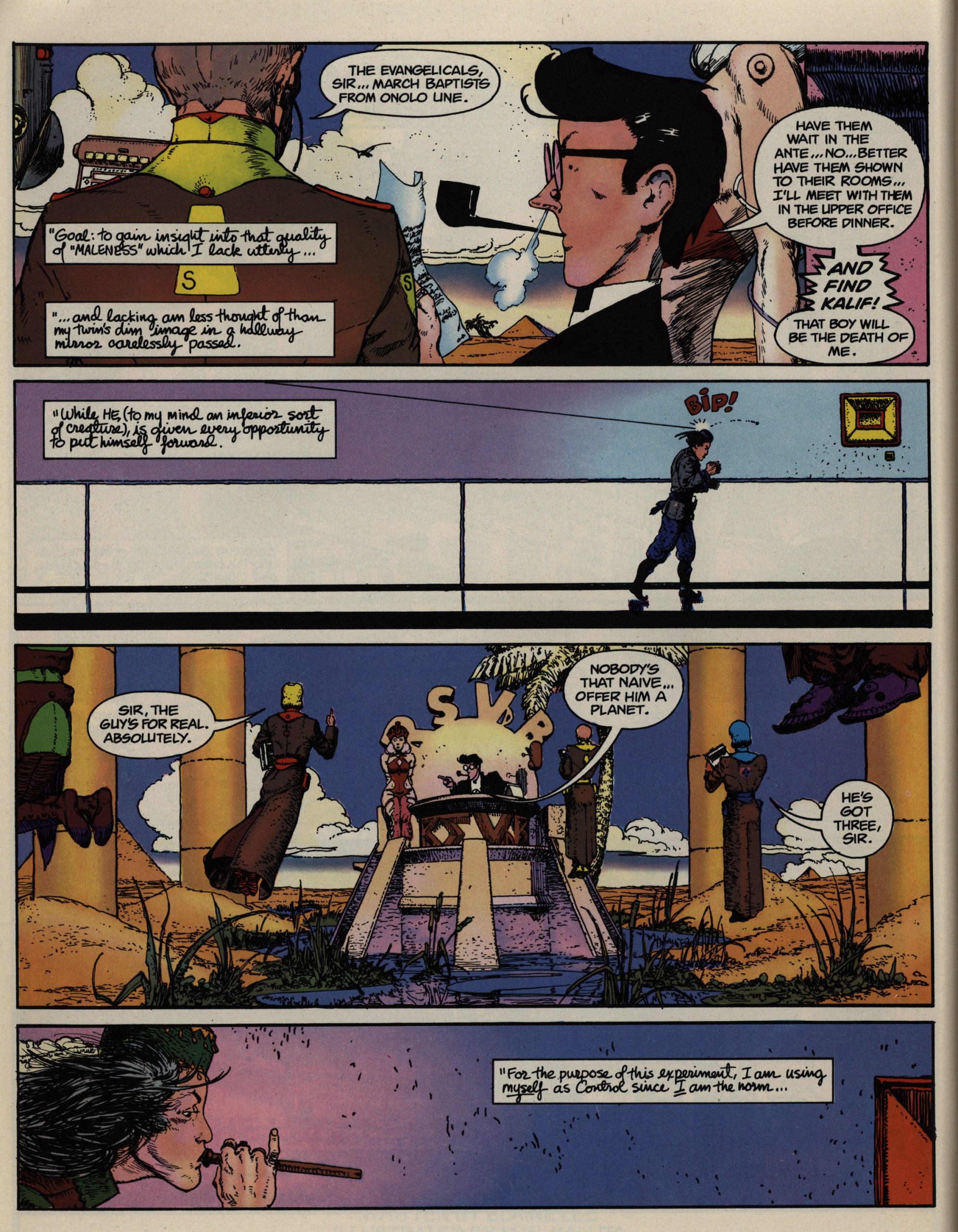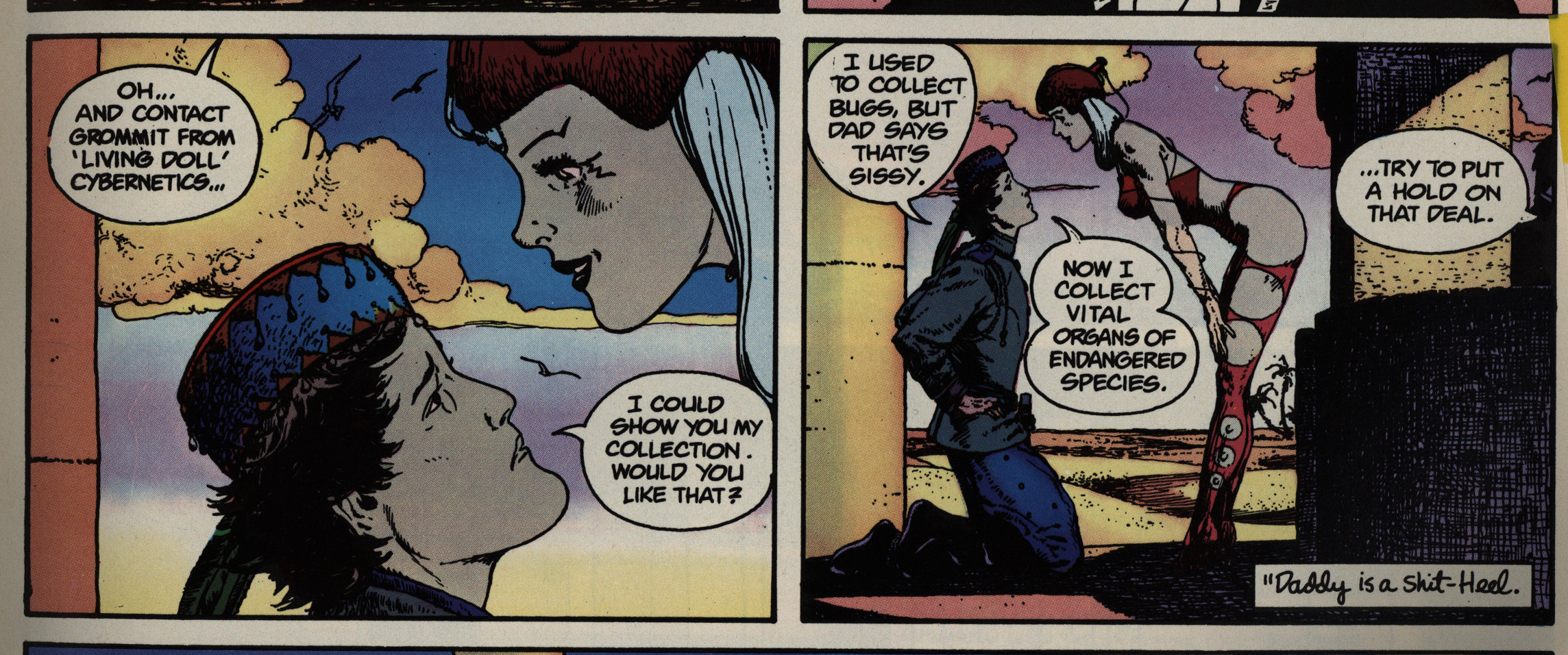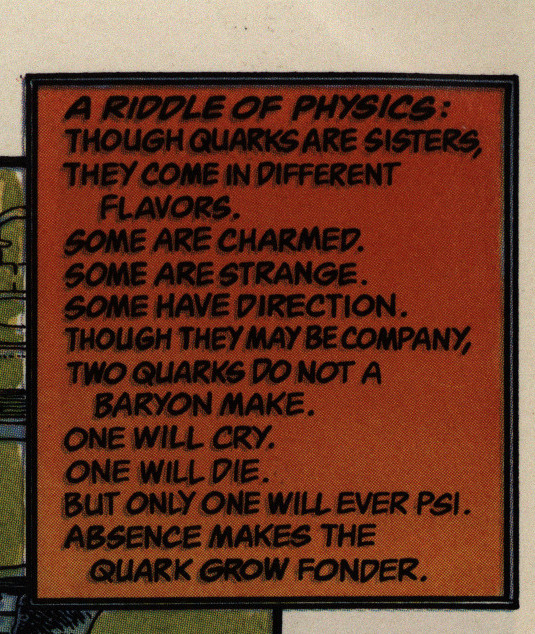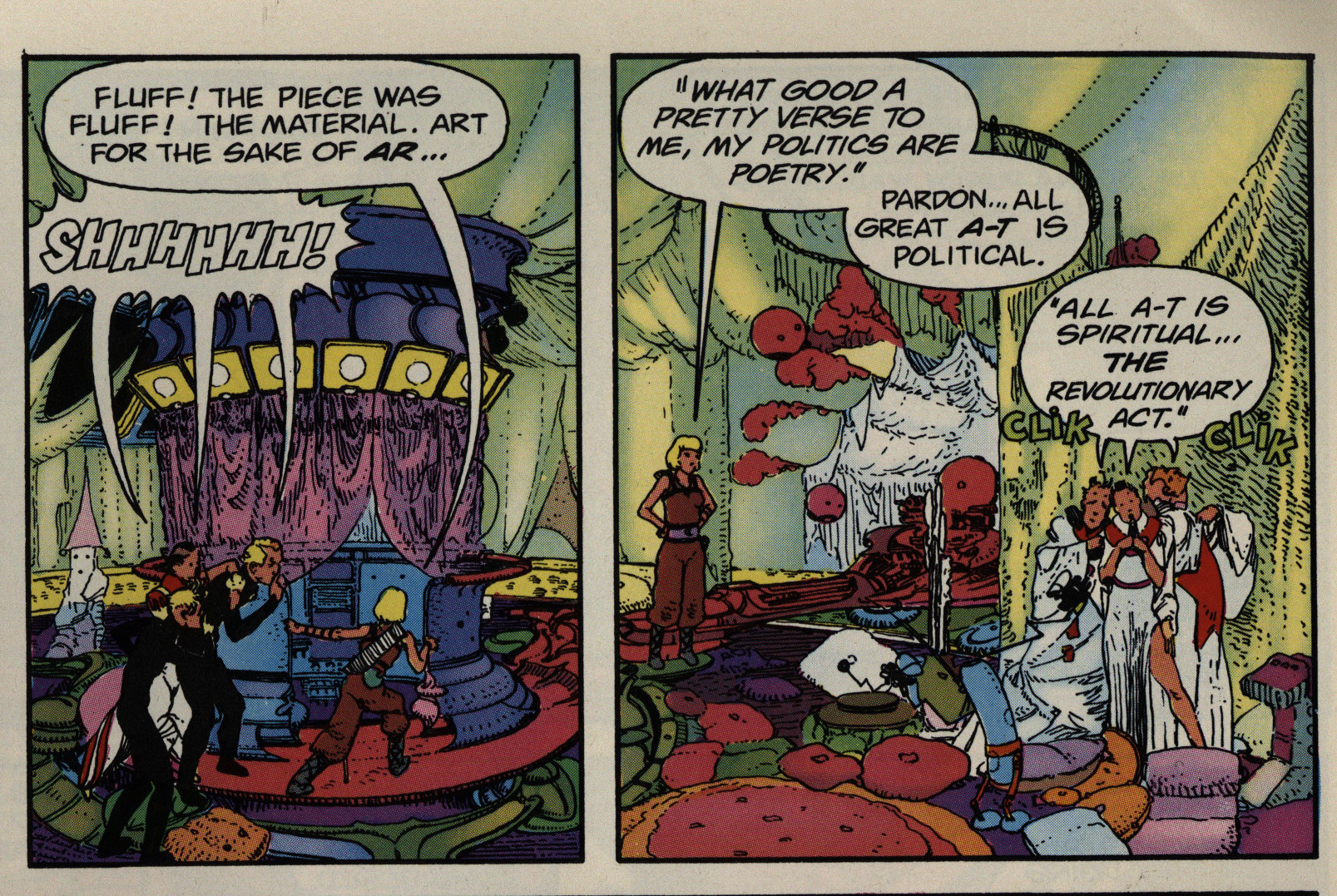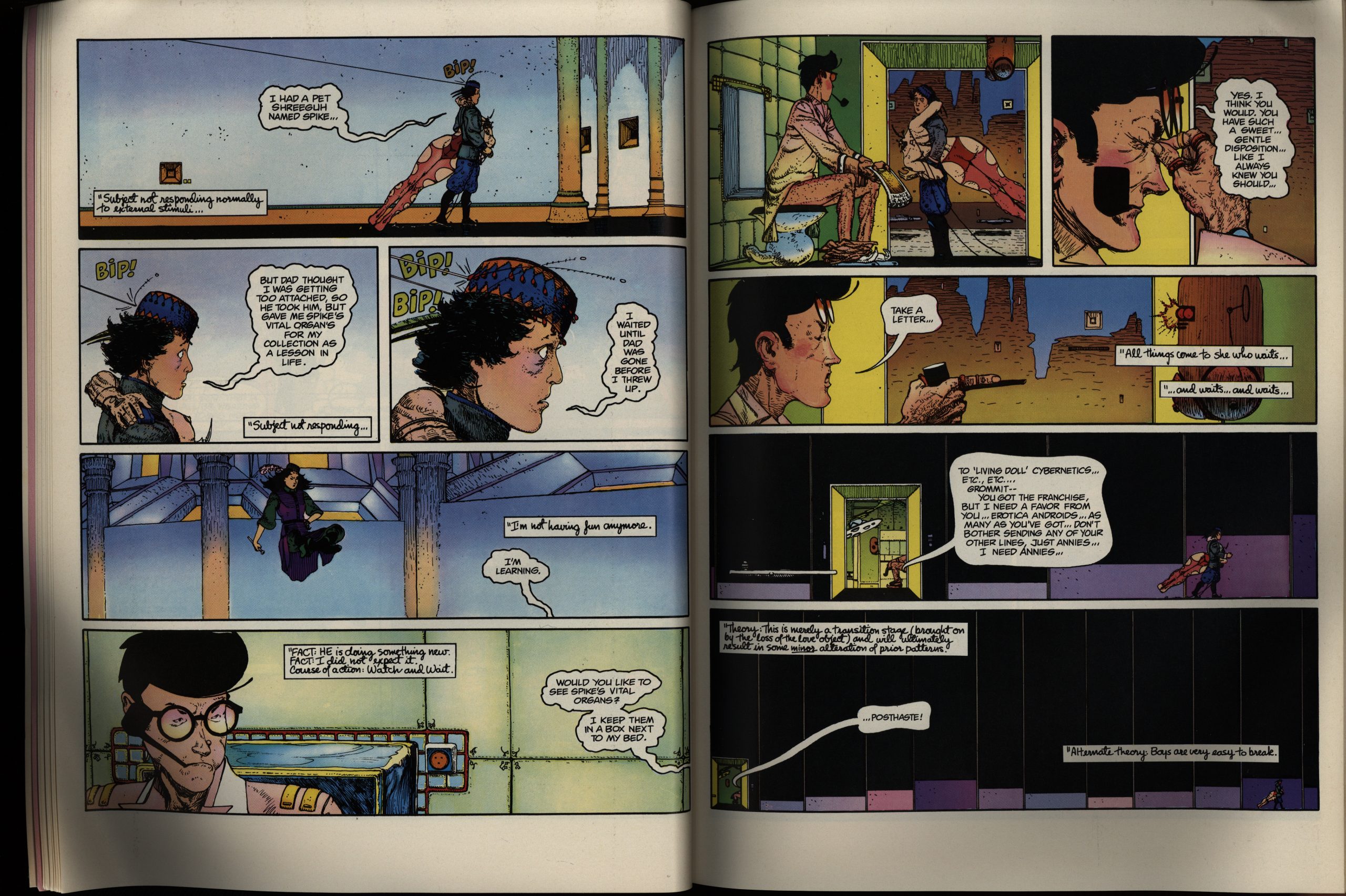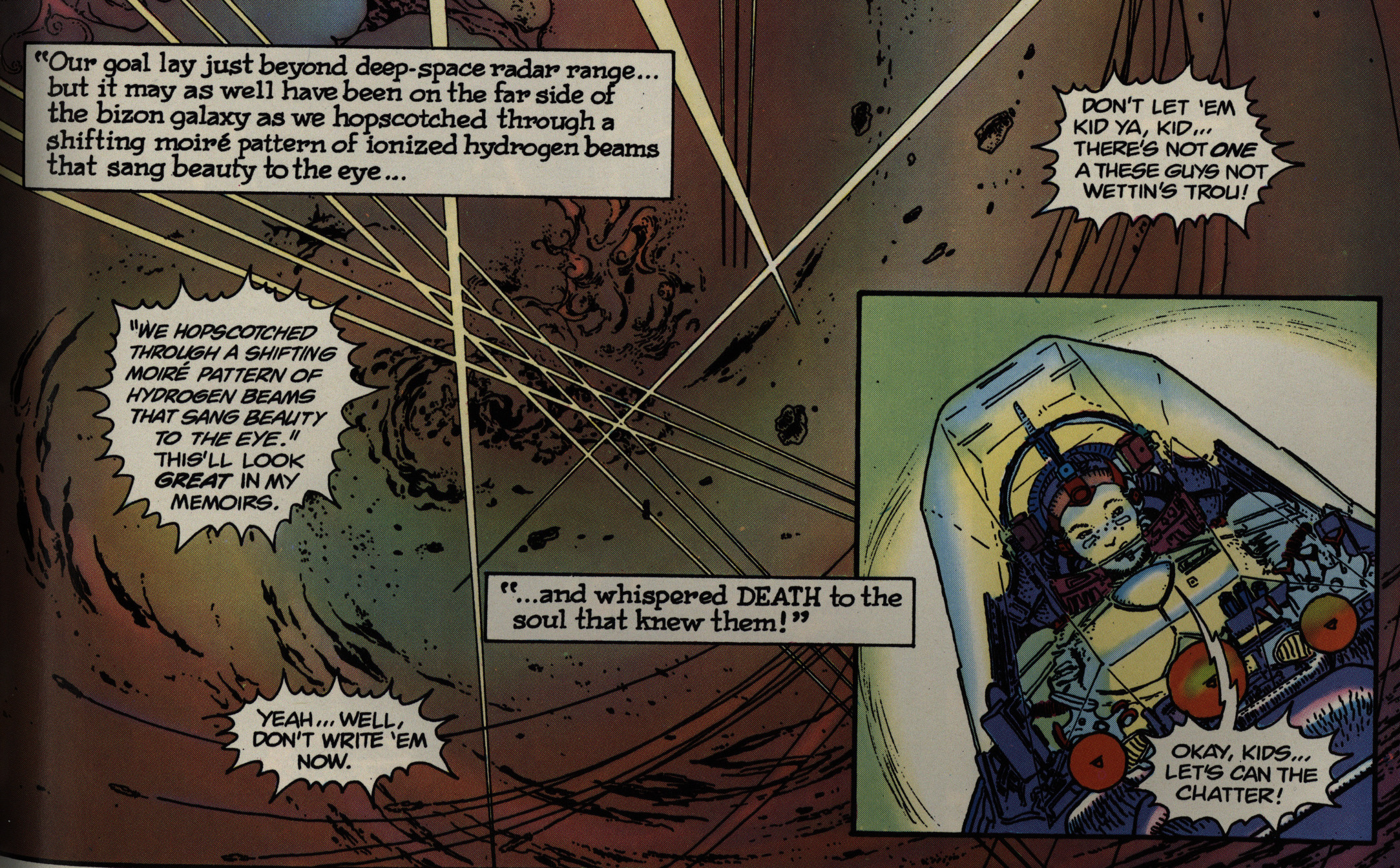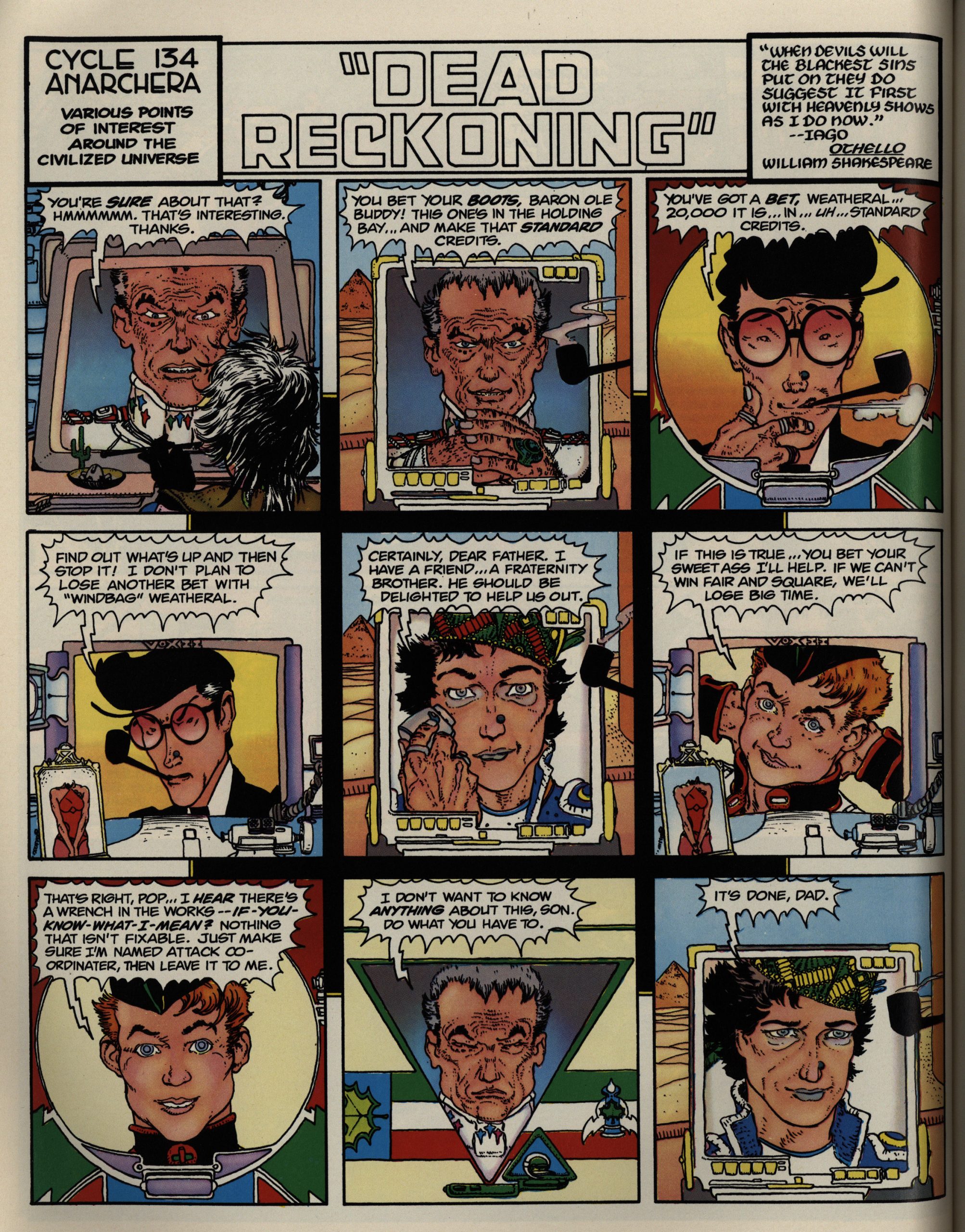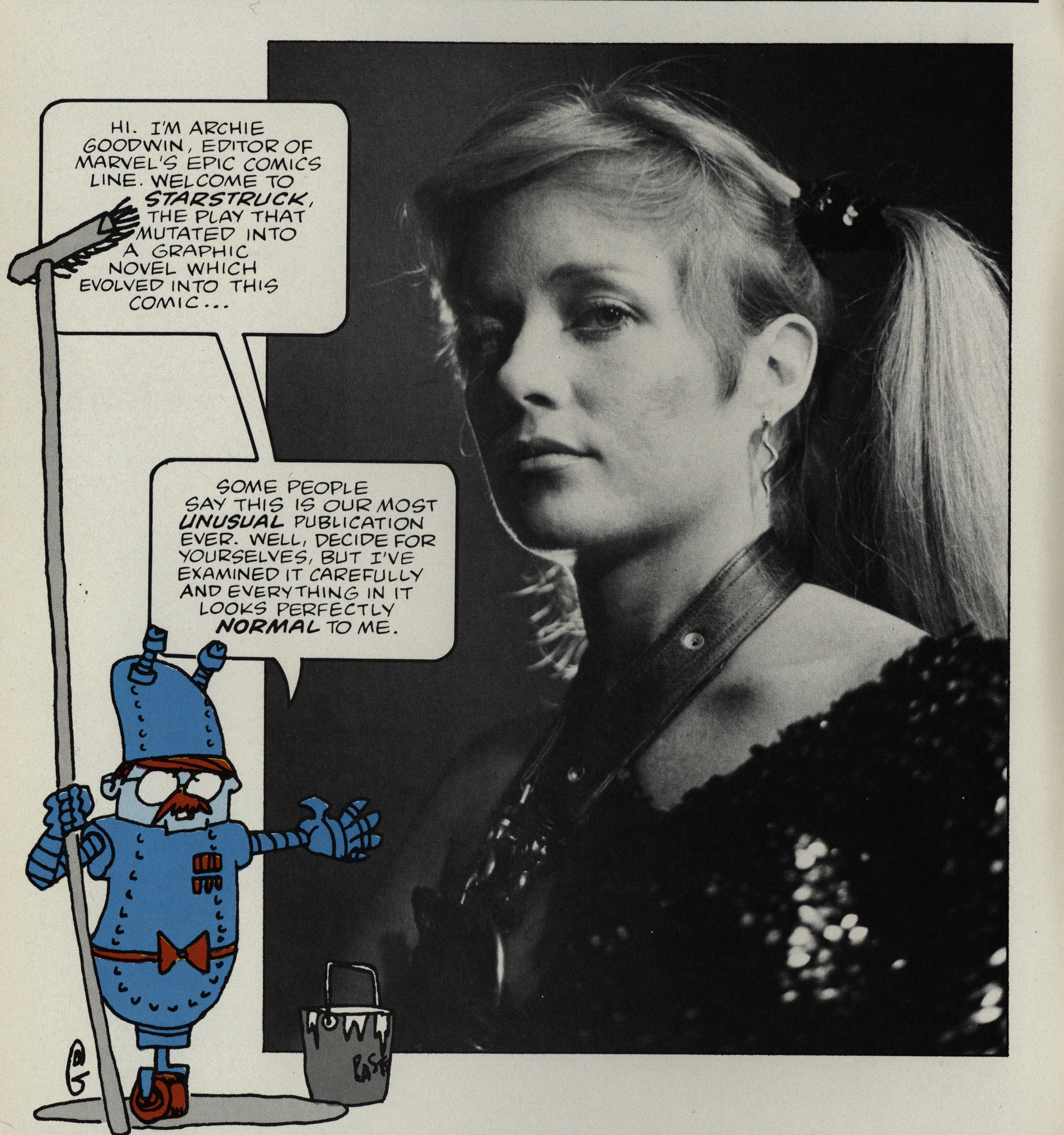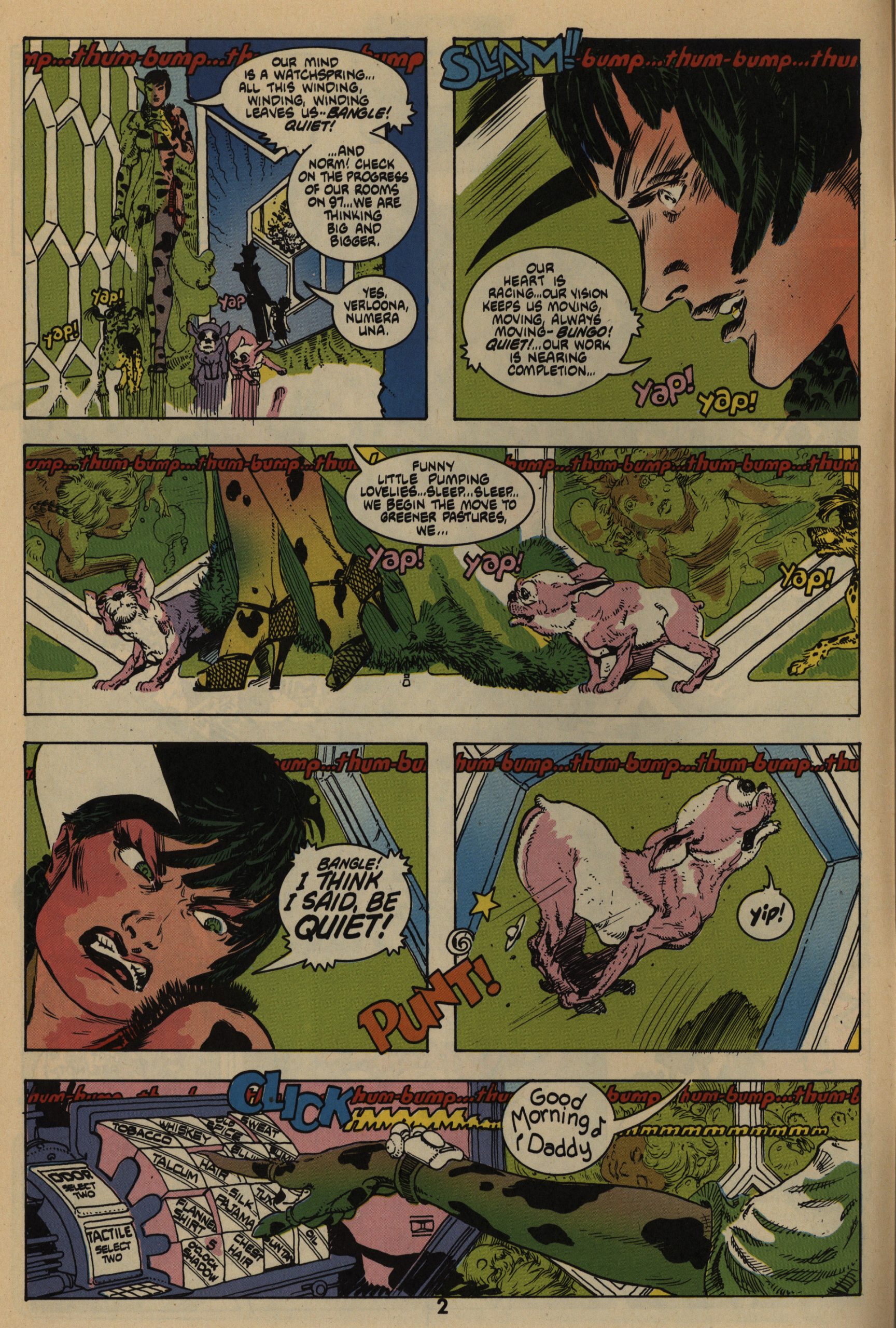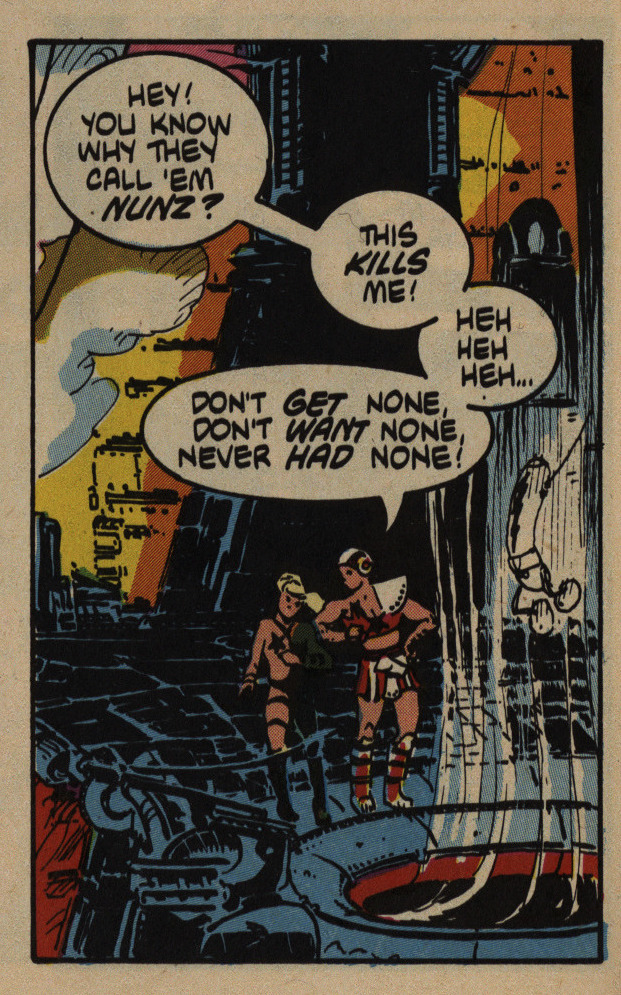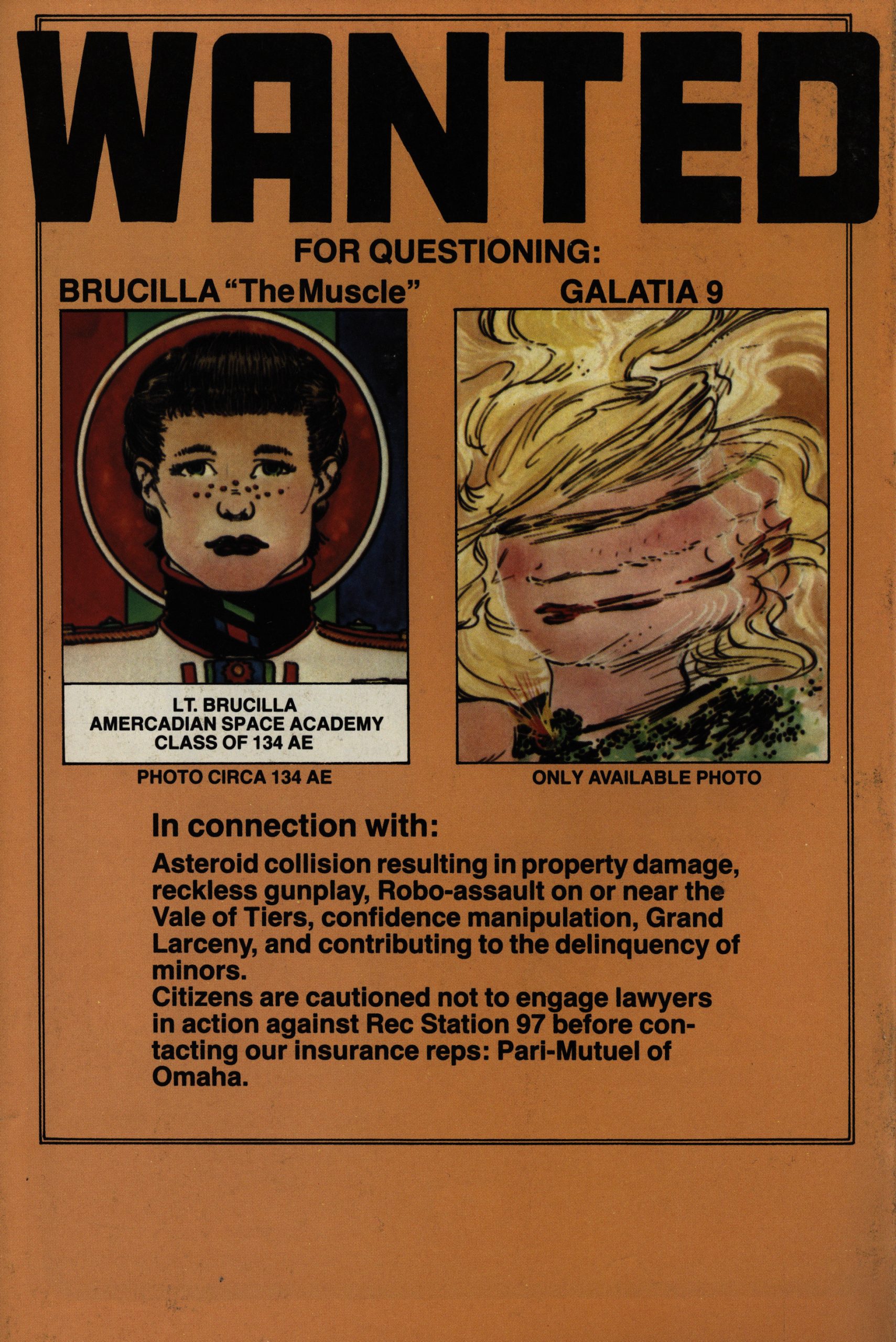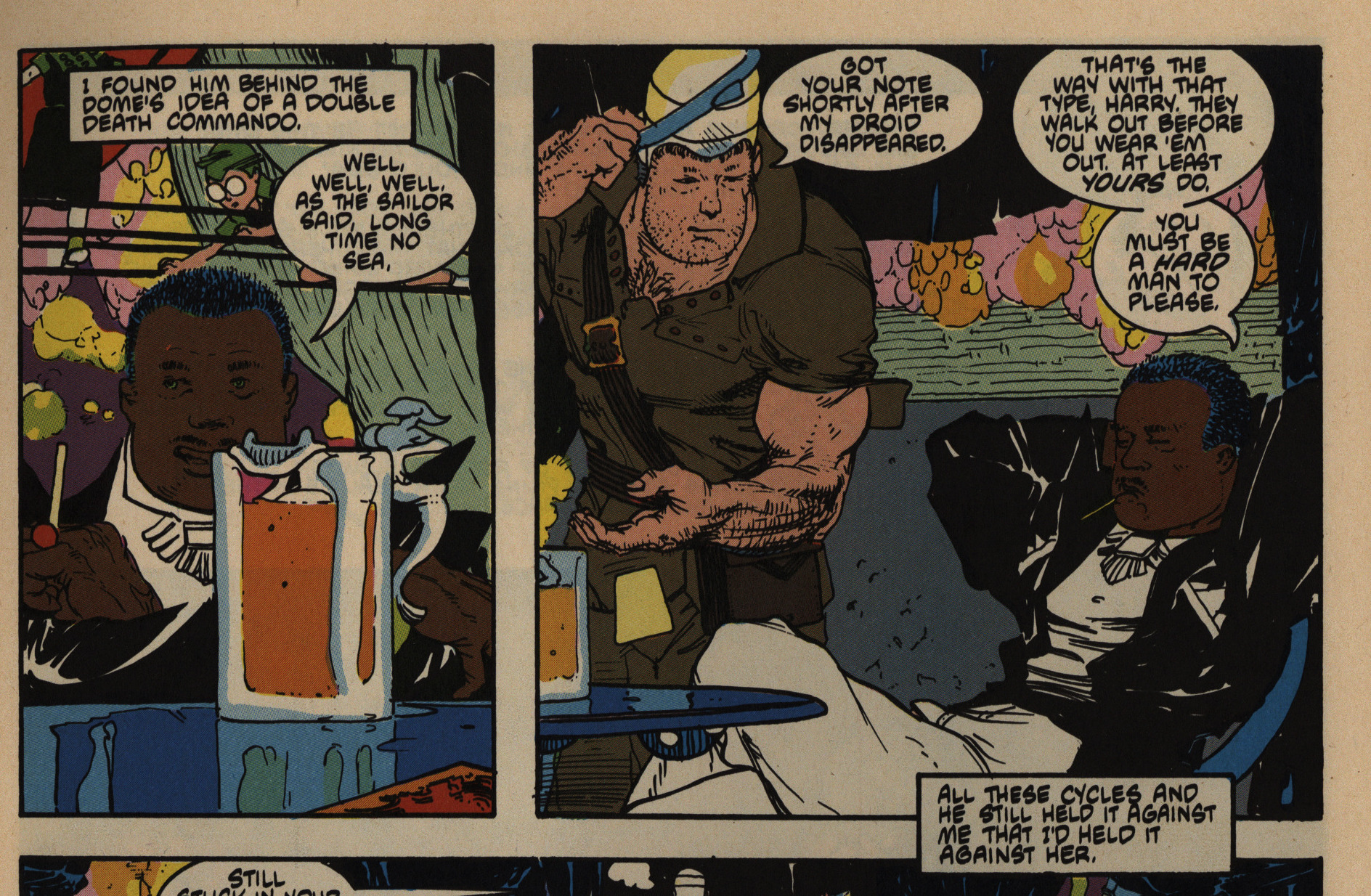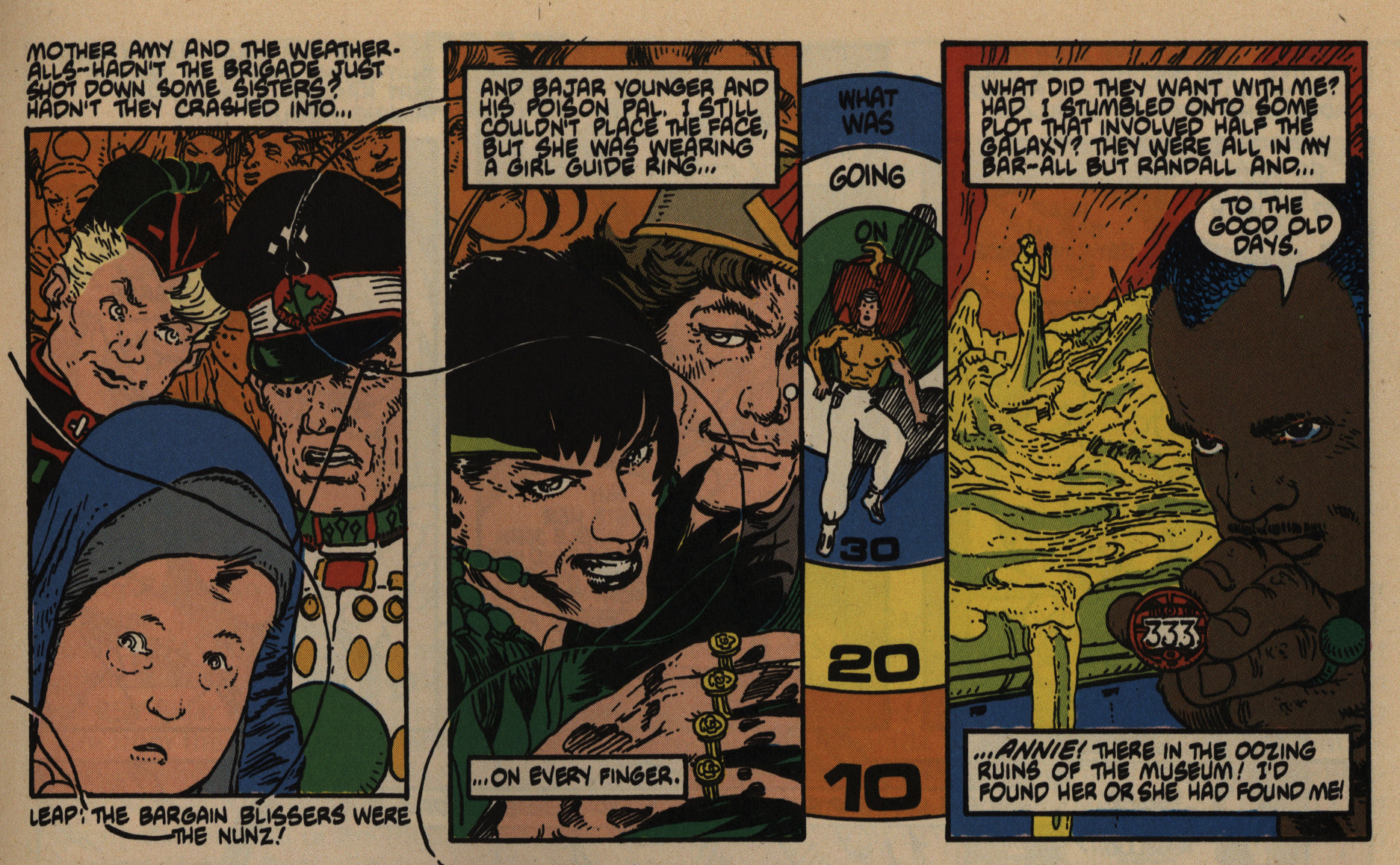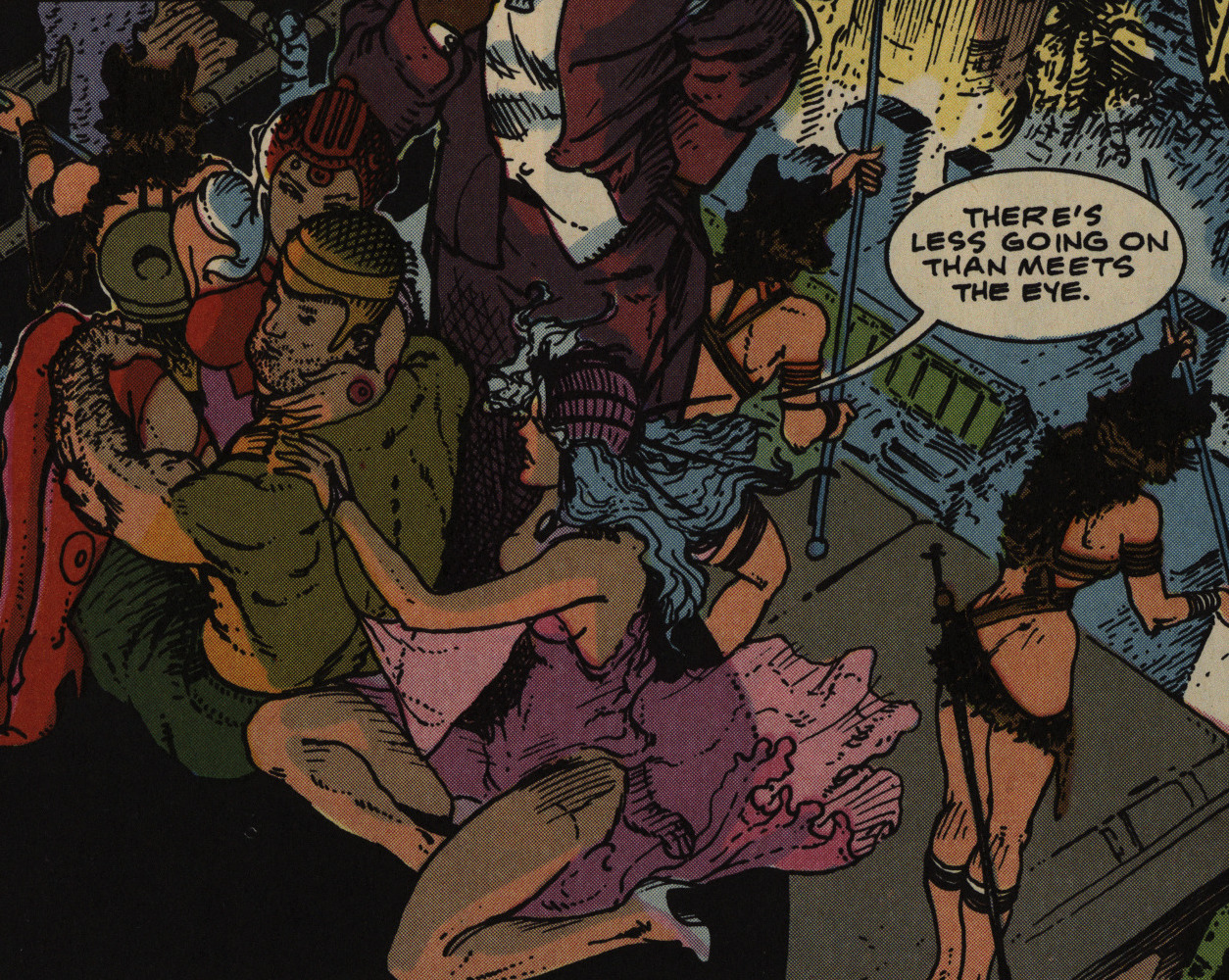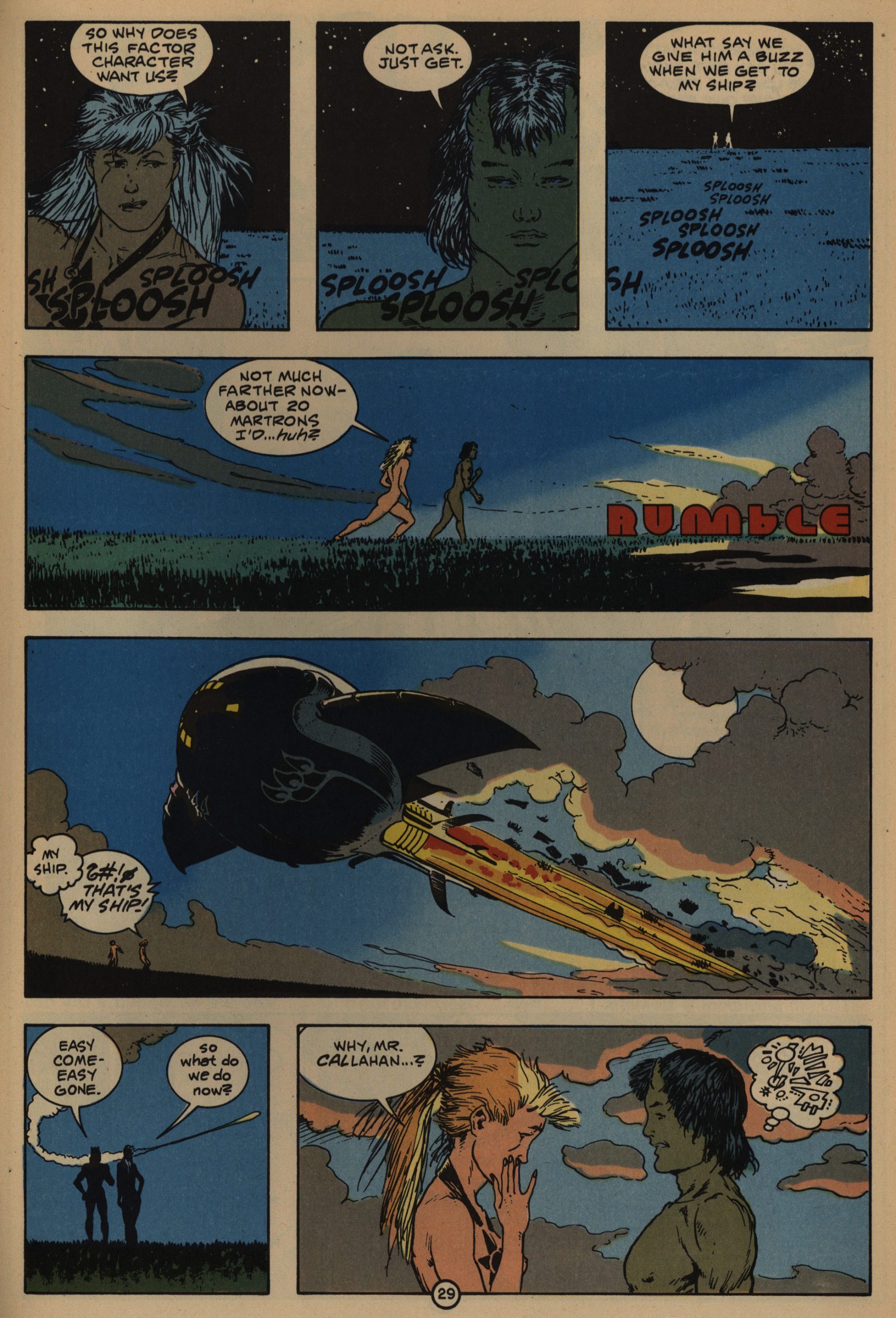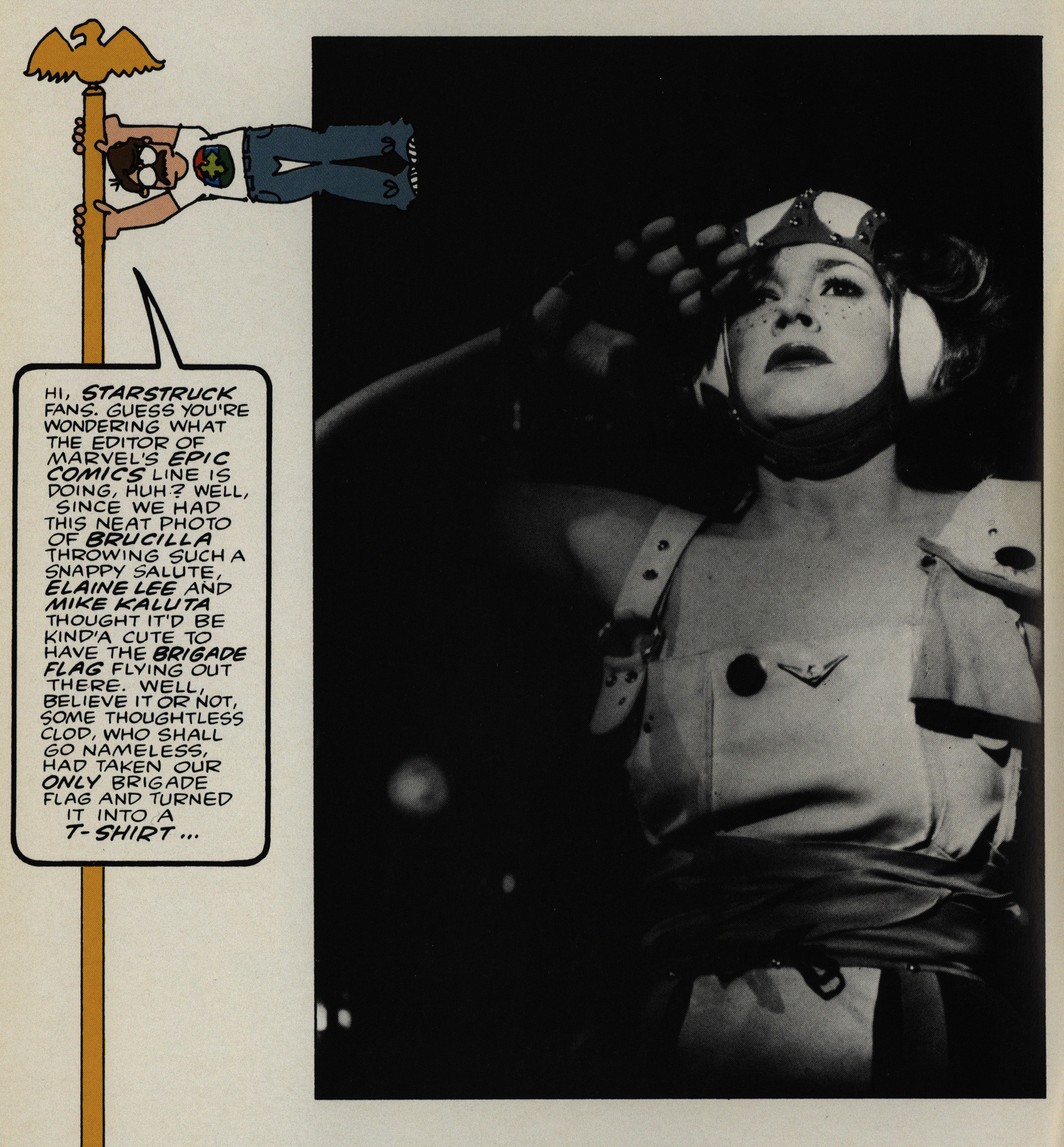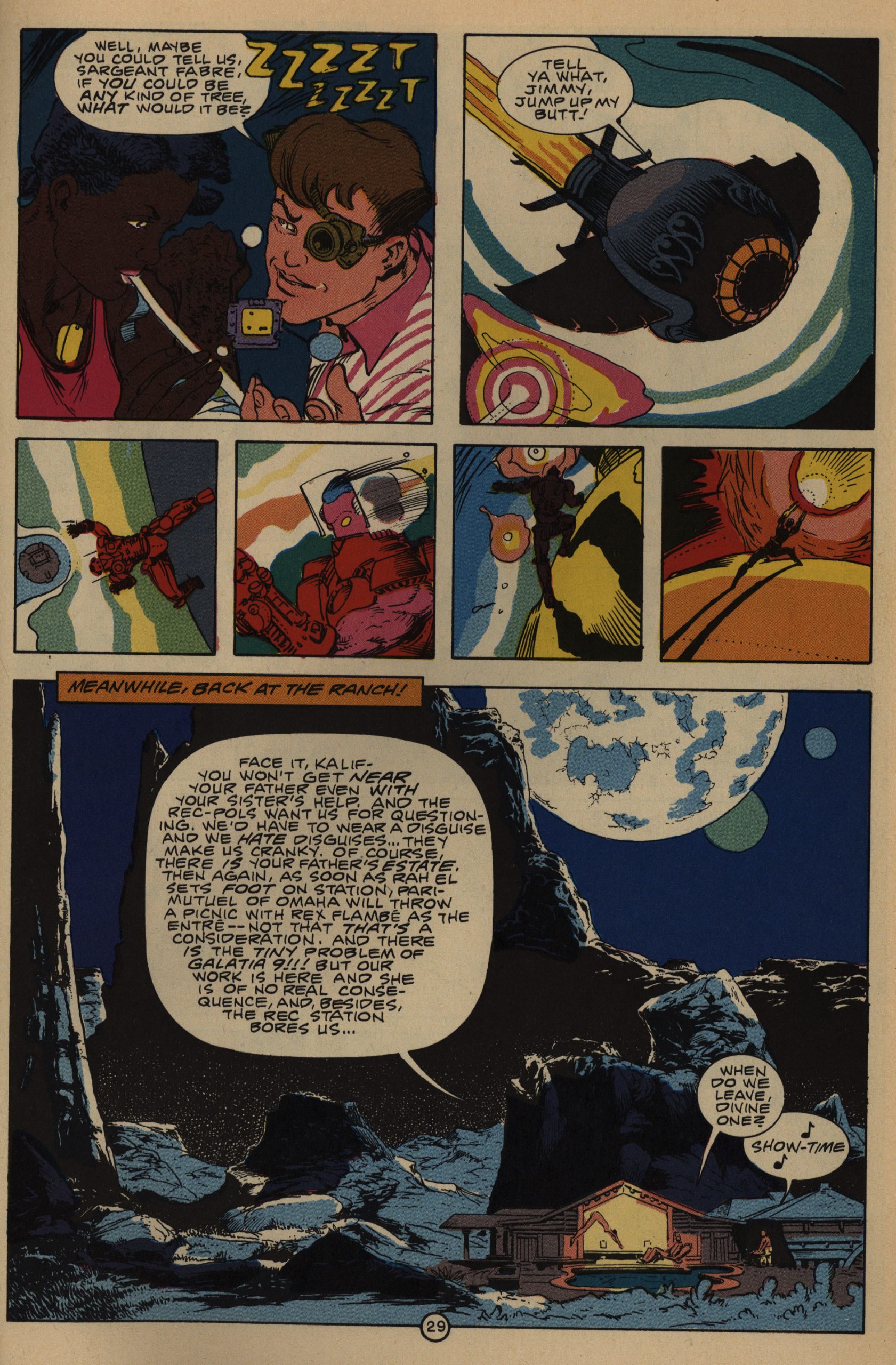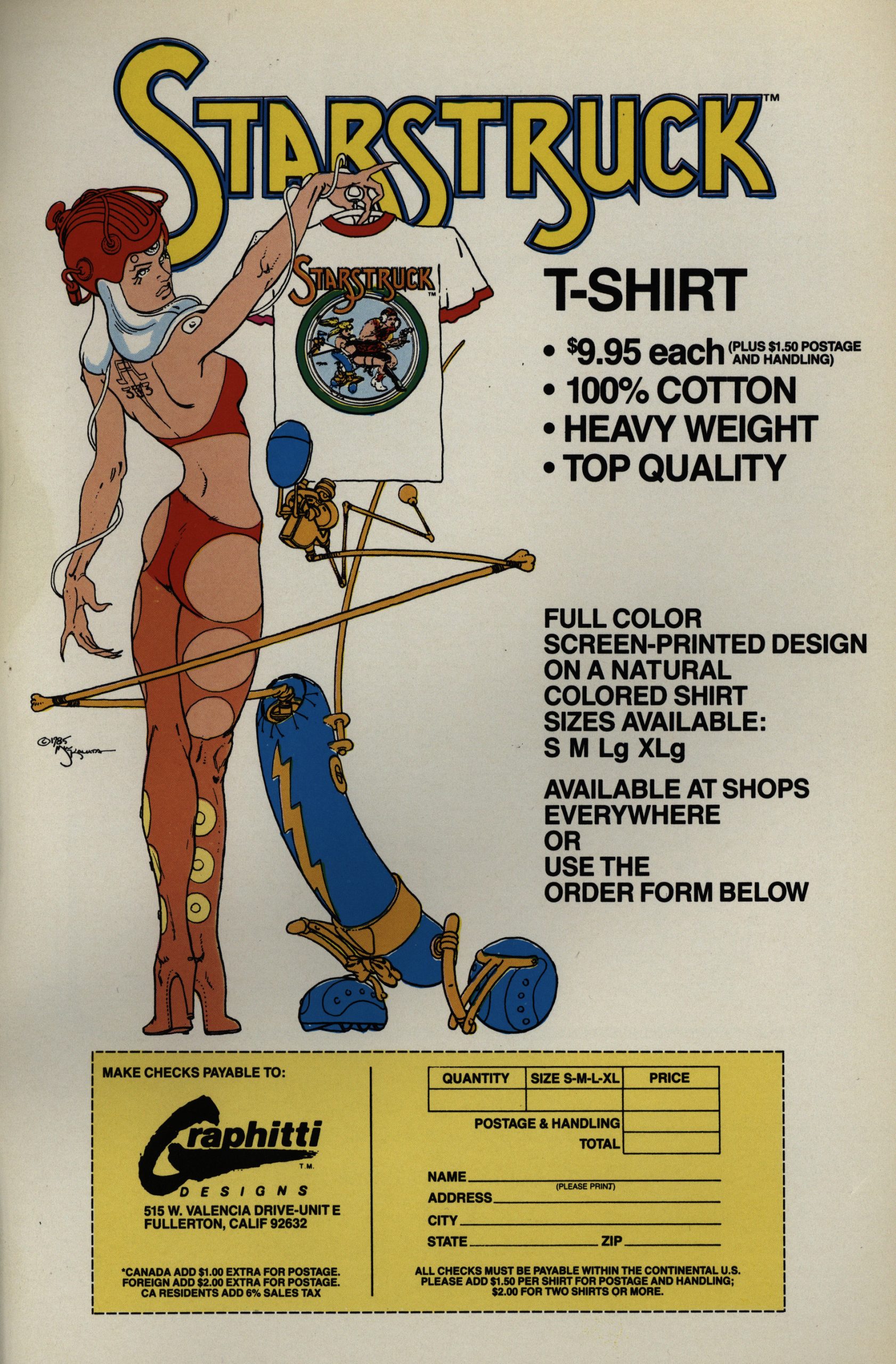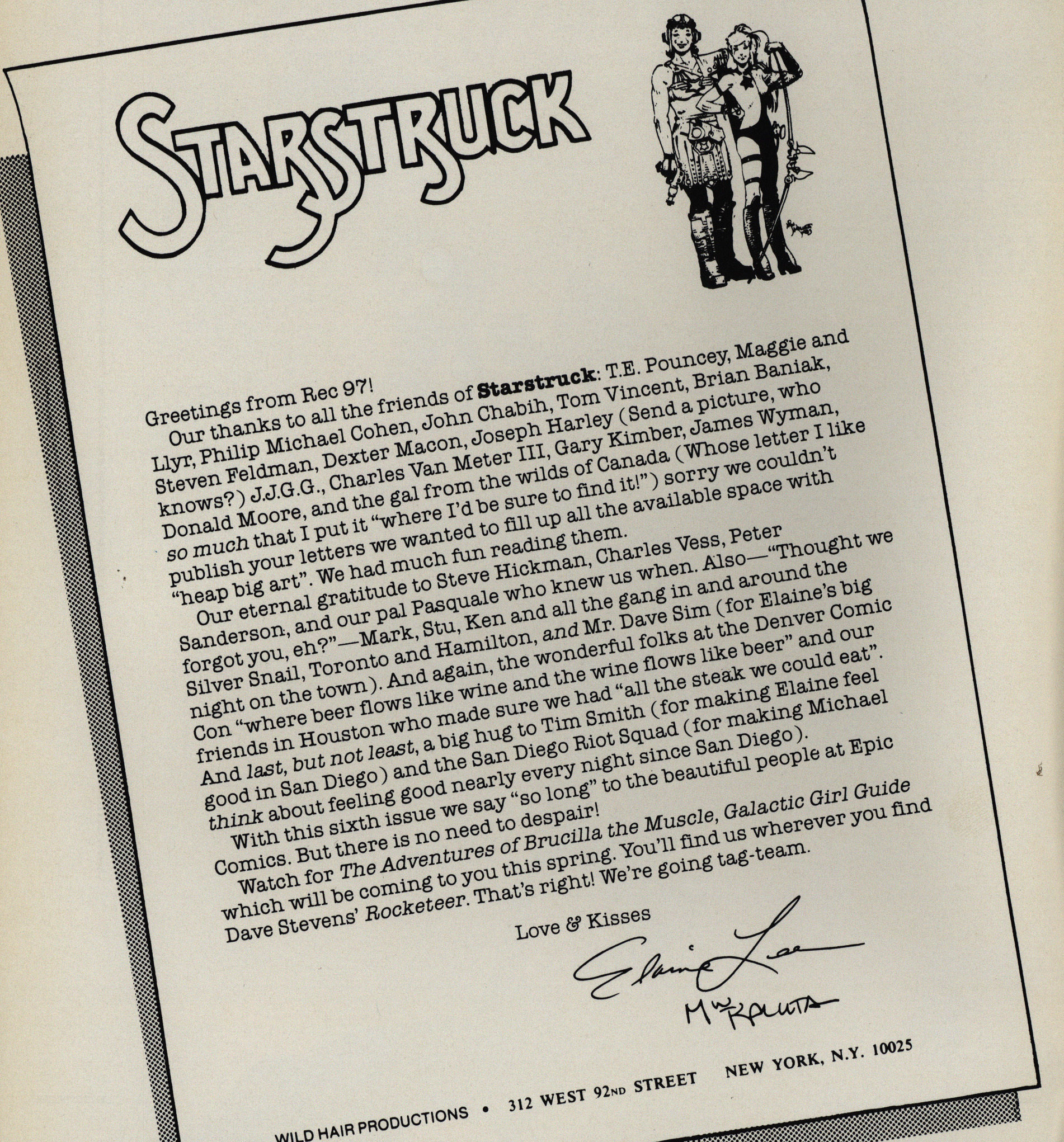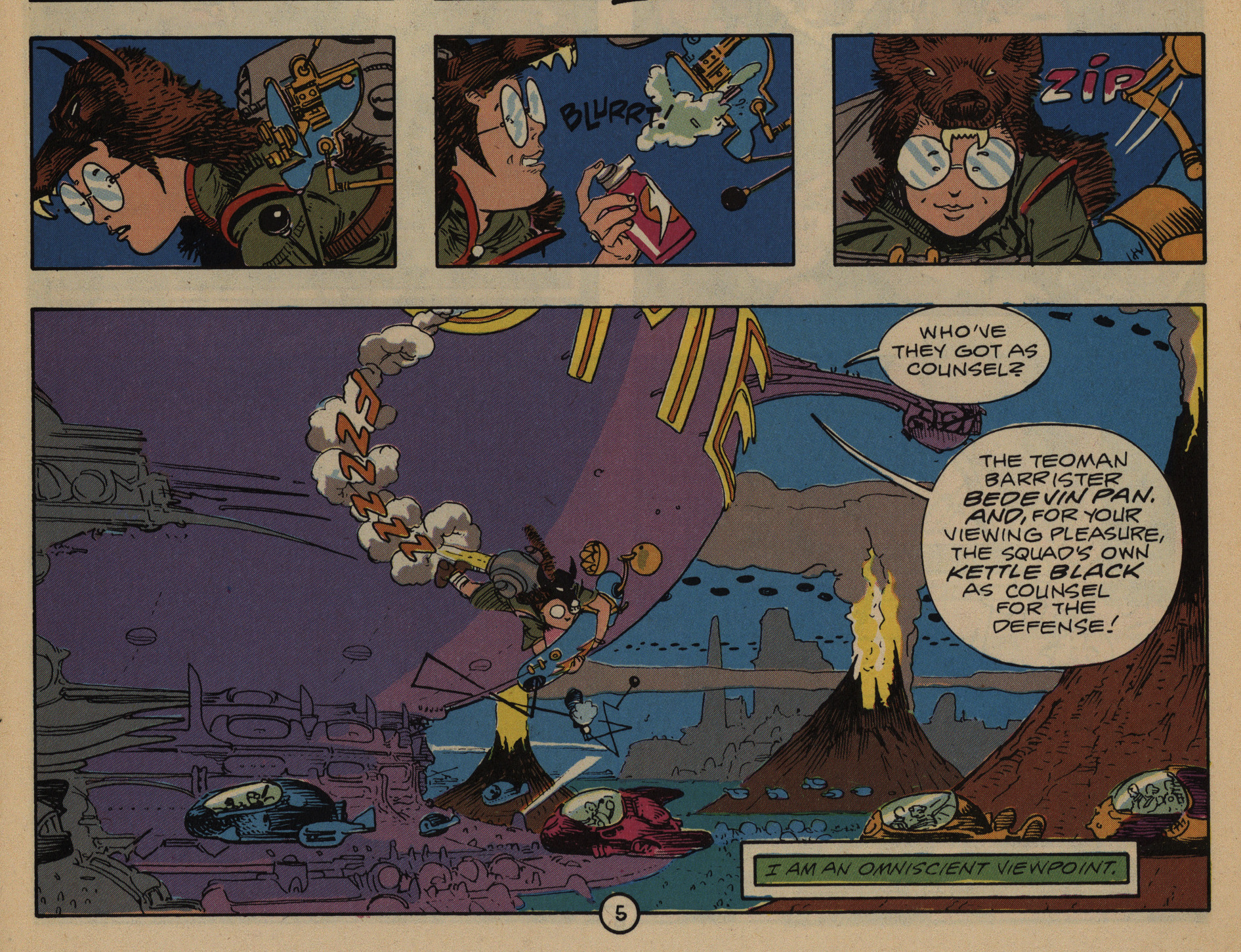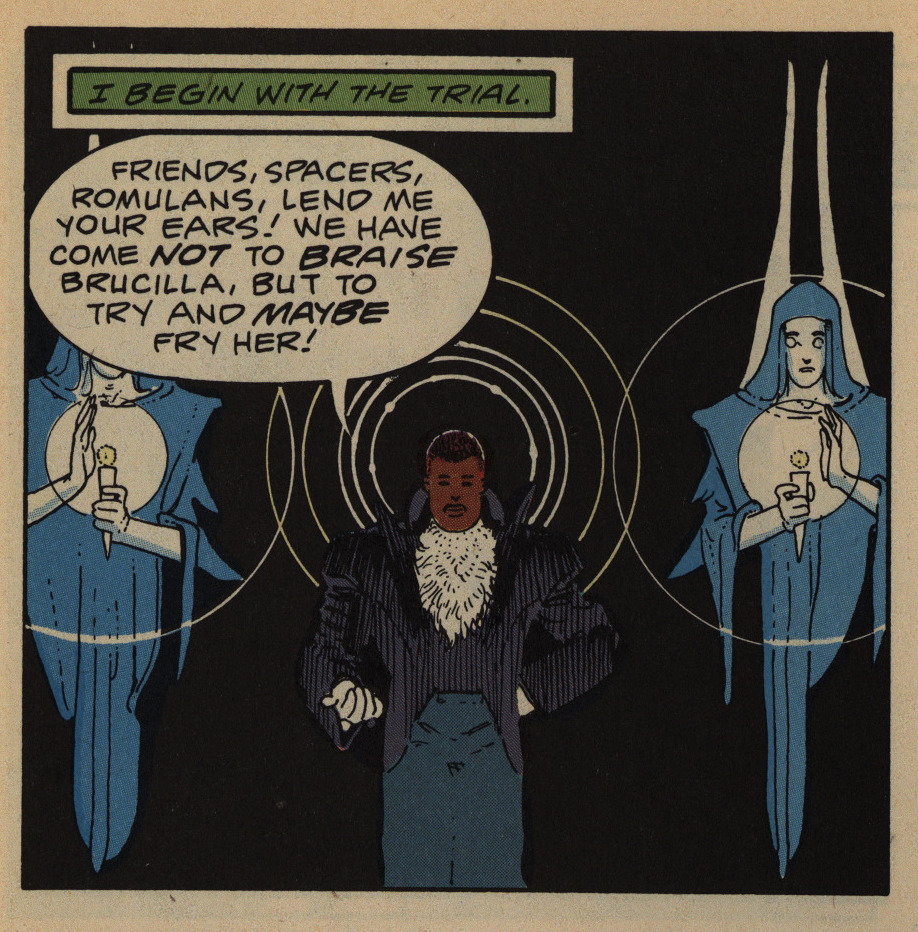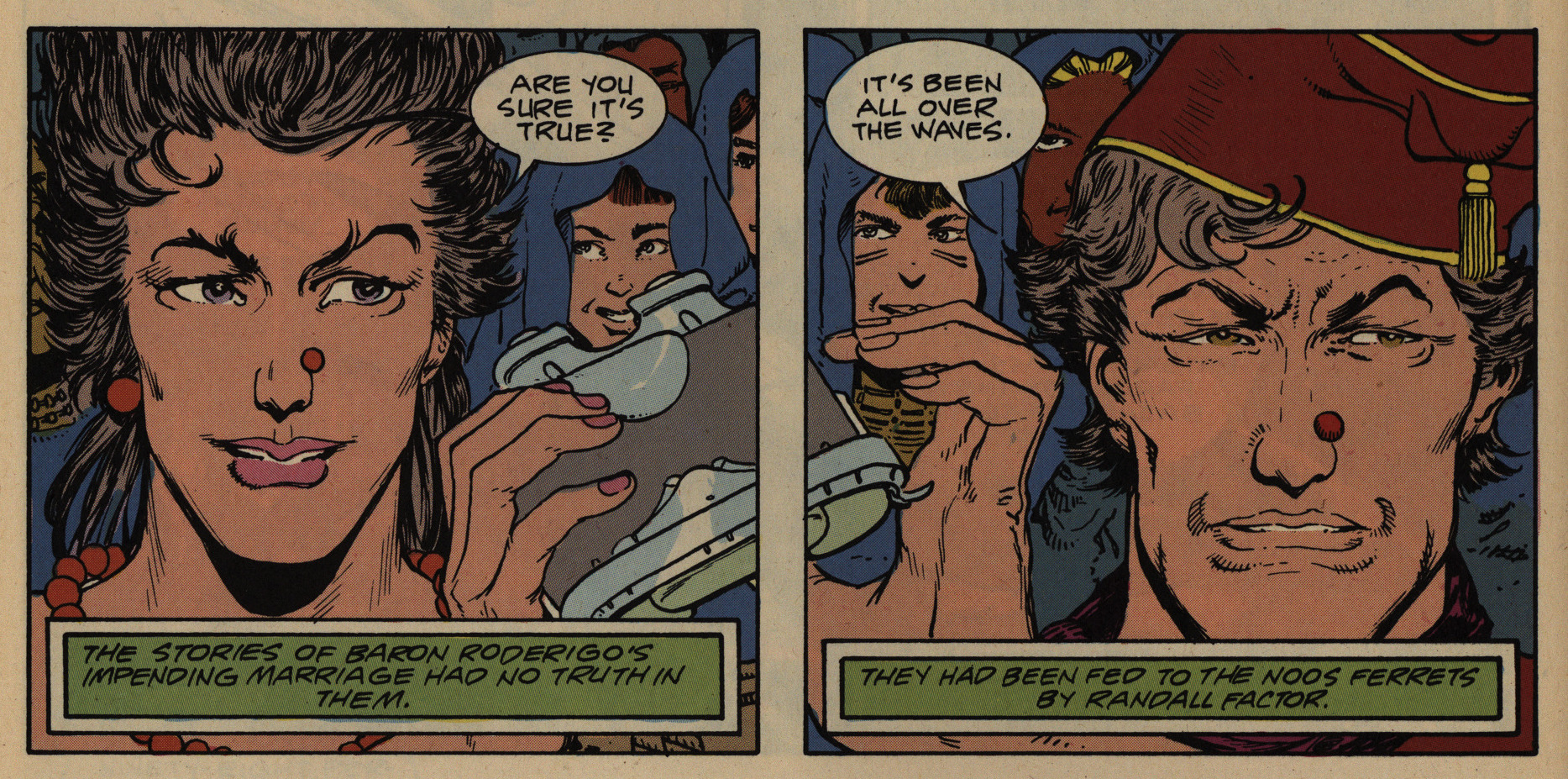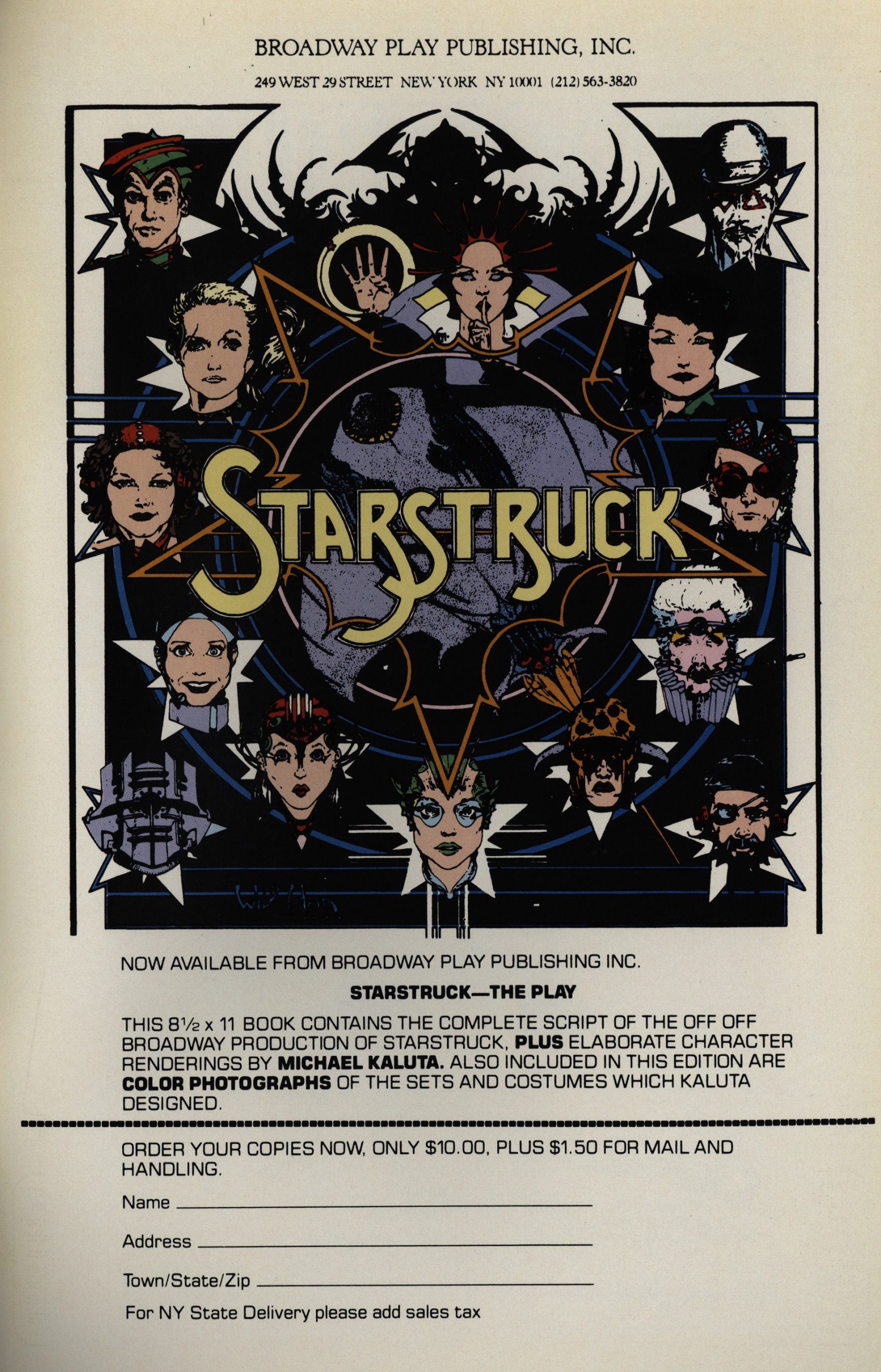Six from Sirius (1984) #1-4,
Six from Sirius 2 (1985) #1-4
by Doug Moench and Paul Gulacy
OK, I’m a bit out of publication order here on the blog now. I finally got Six From Sirius in the mail yesterday, so let’s do it now…
I really enjoyed reading Aztec Ace the other year, and that’s written by Moench, so I had some hopes going in here…
But this is an earlier work, despite being published slightly later than Aztec Ace. It was originally planned as a much shorter serial to be run in Epic Illustrated, and was conceived in 1979, and then it apparently took quite a while for them to complete it.
The first page certainly looks promising. It’s quite striking and seems to point at perhaps some fun storytelling techniques…
But no. It’s pretty bog-standard talking-heads-with-action-in-between. The bearded guy gives some running commentary, which everybody in the story finds annoying… because it is really annoying. He reminds me slightly of that bodyless guy in, yes, Aztec Ace, but that was a much more successful character. He basically doesn’t have character beyond that schtick, and he mercifully stops doing it after a while.
We can also see that this was clearly meant for Epic Illustrated: It’s in magazine form factor, shorter and wider than standard US comic book size. And it’s printed on shiny paper (while most of the other Epic Comics are on matte “Baxter” paper). It looks nice: It’s… offset printing? The other “full colour” Epic Comics were very splotchy around this time, but this looks as good as Epic Illustrated itself.
The first Six From Sirius mini-series starts off as a heist movie. I mean comic.
But the episodic structure doesn’t really work to its advantage: The first part is 20 pages long, and then we just get the first 12 pages of the next part, and then the first issue is over.
This choppy rhythm doesn’t help with the reading experience, because the story is so… formless. It turns out that it’s not a heist at all, but the Cuba missile crisis with the identifying marks filed off, but with added twists that are not at all signalled anywhere. It’s like … exposition, dialogue and fight scenes all stirred into a bowl of porridge.
I think Moench tries to be witty and slightly daring in the text? It’s tedious.
Well, we get a bio of both of the creators.
OK, so far I’ve just bitched about the writing, I guess, so let’s be fair and bitch a bit about the artwork, too. But, OK, it looks fine. The colours are really nice, the layouts are more than serviceable, and the characters are generally attractive. It does sometimes look a bit too stiff and posed, but I don’t really mind.
Three’s so much dialogue like this. Deep and meaningful and it makes me throw up in my mouth just a bit.
It’s finally over, and we get four pages of “the making of…” which explains how it got to be as horrible a book as it is. As I suspected, it did just grow and grow as they both added new stuff to the story. It was originally planned as a ~50 page thing, and then grew to almost 120 pages. That’s why there’s no structure and there’s no tension. It also sounds like (reading slightly between the lines) that the two creators often disagreed on things, and Gulacy would just change stuff around, and then Moench would rejiggle stuff in response.
But wait! It’s not over. Six From Sirius 2 followed just a year later, and is four 24 page issues, so at least this time it sounds like they’d have to have more of a structure to the book, so perhaps it’ll be great now?
Again, the first page looks quite good…
But then we’re back to the same vague flow.
Moench has a way with words, eh?
EH?
Eh.
I think this building site needs some safety inspectors! Where’s the union when you need one? But how can you not love that guy over on the right who’s totally going “yes! I’ll just drill this mound here!”
One thing that’s surprised me reading these Epic Comics is how few of them have backup features. They’re all chock full, but it’s all main feature (usually 30 pages a pop). Other companies (like Eclipse and Pacific) working with many of the same creators frequently had like 6-8 pages of backup stuff per issue… and that’s what we get in all four issues of the second mini-series. First out is Jonathan Zack with something I have to assume was originally meant for Epic Illustrated. It’s called “Parody”, but if what I’m not sure. Looks pretty arresting, though.
The other two features are not arresting in any way. David Dorman and Jay S. Guikema do an illustrated sci-fi thing that I zoned out on while reading, so I don’t even remember what it was about when I’m typing this a couple of hours after reading it. Sorry! Perhaps it was awesome?
The subtext becomes text!
The third backup feature is a two-parter by Mike Saenz and Mike Vosberg, and it’s a twist end sci-fi kind of thing. With nuns.
Oh, yeah. The main story did continue… sort of. It was super static, with all the protagonists more or less trapped in the same place for way too long. It’s the kind of series you can recap in two sentences, and it’s not because there wasn’t a huge amount of verbiage and exposition and intrigue and etc, but because none of it didn’t really seem to matter much.
I give this a rating of “now that’s what I call tedious”.
But what did the critics think?
RA Jones writes in Amazing Heroes #55, page 115
Six Erom Sirius is the first mini-
series to be presonted by Marvel’s
Epic Comics line. The product of
Doug :Moench and Paul Gulacy,
who teamed so beautifully in the
past on Master of Kung Fu, the
book shows every indication of’
being a sure winner.
Doug Moench is in his element
when dealing with stories of in-
trigue and deception, whatever the
genre he uses to present them. The
characters introduced in this first
issue are strongly defined. The one
Sirian who grated on my nerves
was the man called Skreed, a poet
who prattles on incessantly. This is
not a criticism, however, .because
he has tho same effect on his ship-
mates.
The b)dC.e of the story never
lags, moving smoothly from scene
to scene. Most importantly,
Moench’s script is one of the most
adult you will find in comics.
When I use the word “adult,’
don’t mean pin-up nudity and
graphic violence—there is neither
in this issue. bvVhat I medn is that the
story is on a level of meaning and
complexity that is aimed dt an
older audience. It is dn adult book
in the best sense of the word.
The art is on an equdlly high
pldne. For quite some time, we
have had to be content with seeing
Paul Gulacy’s work only on the
covers of various Americomics
titles. Now, at last, he has returned
to storytelling. The use of that word
is deliberate, for his graphics tell
the story as surely as Moench’s
captions and dialogue. Gulacy is
perhaps the most cinematic artist in
comics, so much so that his draw-
ings almost move.
The depth and subtlety of his
work is a joy to behold* His
characters are individuals, each
with its own distinct likeness. No
colorist •is listed in the credits, so
one can only assume Gulacy is also
responsible for the tones. If so, he is
to be doubly applauded, for the
use of color is vividly compelling
throughout.
The escalating price of comics is
a constant source of irritation for
me, but in this instance it is fully
justified. Six From Sirius is worth
every penny of its cover price.
Keep Ronin, with its pretentious-
ness and paddi ng. This book exem-
plifies what graphic stories are all
about. It may well attain the status
of being a classic in the field of
comics.
Jones is wrong as usual: That didn’t happen. Obviously.
RA Jones then writes in Amazing Heroes #85, page 53
Last year’s Six From Sirius limited
series showed great promiqe at its
beginning, but it bogged down be-
neath the weight of a somewhat pon-
(lerous plot. It didn’t collapse from
this burden, but is was limping
noticeably by the time it finished.
l’rn going to go out on my well-
worn prognosticatory limb again,
and predict that this sequel will fare
sotnewhat better. The first series was
hurt by a (onvoluted plot that ulti-
mately presented such a barrier that
by the tirne you penetrated its depths
you were too exhausted to really
experience anv «atisfaction.
he story here qeems much leaner
and, as with an athlete, this makes
it move rnuch ‘nore briskly, The plot
is, if anything, even more intriguing
thdi) its predecessor. The moments
of- conserqation and exposition dre
nicely balance(l by exciting action
sequences. ()nce pa«t the obligatory
opening segment,_the use of dia-
lot’,ue becornes more tight, helping
the •on/ accelerate toward its climax.
As for the art, adtniration for
Paul C,uldcyQ work is by nosv vwll
documented. Nor does he disam
Gulacy. uses •a photo-
graphic style of art that is highly en-
joyable.ÅWhere else can you turn the
page and find yourqelf face-to-face
with Edward G, Robinson?)
Thore are other artists who attetnpt
a similar technique, but theyaltnost
always fall short •in one very itnpor-
tant way.- Their drawings appear to be
nothing more than copies of posed
photos; they have no movement;
they Show no ernotions. Gulacy (‘dn
not only portray a character who
resembles Sean Connery or Humph-I
rey• Bogart—he can bring that char-
actet to life, give hima sense of real-
ity. Through hig excellent use of tone
and color, Gulacy is also oneof the
few comic artists who actually
deserve to be shmvcased on slicker •
paper.[…]
Six From Sirius II will probably not
rank as a clagsic in anyone’s book.
But this first igsue presents a solid
premise and a sense of adwnturous
momentum that I feel will succeed
in carrying the series to a rousing
finale.
Man, that OCR thing didn’t like that Amazing Heroes page, I guess? But I think you can make out what it says if you squint a bit. Jones walks back his praise of the original Six From Sirius quite a bit, and then dishes on Gulacy’s posed artwork.
(It didn’t succeed in carrying the series to a rousing finale, though.)
Oh, here’s an interview with Gulacy in Amazing Heroes #159, page 30
GALACY: About 30% of each story
is from photos. Most of the time it’s
so altered you would never catch it.[…]
AH: After your h’arrenjobs you said
you ‘d never paint a comic book story
again. Isn ‘t that what you did in Six
From Sirius?
GULACY: Not quite. Sirius was a
multi-media product, but the majority
of it was done with markers, a techni-
que I picked up during my advertis-
ing days. It makes things go a lot
quicker. You will never see me pain-
ting a comic panel after panel, like
they are doing today. Just the thought
of it is absurd.[…]
Our gratification comes when
they are a success. Six from Sirius was
a hit. Its collected version outsold the
Elektra collection.
Huh.
Gene Phillips writes in The Comics Journal #96, page 47
Other problems:
(l) The project had two strikes against it:
t began as an Epic Magazine project, which
may explain its episodic look; and it was
based on a spacefaring re-enactment Of the
Cuban Missile Crisis. With regard to the
latter, I feel that Moench merely tran-
scribed the surface appearances of the
original conflict, without getting at any of
the cultural perceptions that made it
significant. The only theme here seems
vaguely to concern the idea that you can’t
trust anyone who deals with espionage, as,
by series’ end, Axellon, Balsamo, and
Sirius are all condemned for dirty business.
(2) The dialogue, aside from being top-
heavy, never conveys the sense of living in
a far-future era; even a few modern collo-
quialisms quickly shatter the illusion of
another world.
3) Although it i’ perfectly possible to use
psychic concepts in science-fiction, despite
the Varying opinions make it necessary
that an author should establish some
reason for his characters to believe in them.
It need not be elaborate; a simple “Dr.
Soandso in year 1999 verified psychic
powers” would do.
Some critics are of the belief that the art,
more than the plot, defines comics work.
To them I can say only that such is the case
only when the artist brings to the project a
creative input equal to, or greater than,
that Of the writer. (By this token, some
writer-artists lose touch with their own art
so badly that they become merely compe-
tent at the art, stressing the task of writing
above all else.) I don’t have any way of
knowing how much of himself Gulacy put
into this project, but it appears as though
most of his creativity focused on trying to
impart drama to a script that had lost all
sense of timing and tension. The best
sequences are those that try to invoke some
of the adventurous spectacle inherent in
the espionage thriller, but there are few of
these, and many, many dull, cold (albeit
meticulously rendered) tiers of talking-
heads. Perhaps Moench and Gulacy got so
involved in this future setting, superficially
an indirect commentary on mechanical
human attitudes and the evils of espionage,
that they forgot to instill in the story any
humanity against which these failings
could be measured.
*slow clap*
R Fiore writes in The Comics Journal #93, page 29
Six From Sirius # 1
(Marvel /Epic)
About half a dozen too many. Ha! ha!
Pretty clewer, huh:’ Just couldn’t resist.
Actually, it’s serviceable space opera from
Doug Moench and Paul Gulacy, but unless
there’s some sort of heavy irony here that
I’m missing, the dialogue is simply gro-
tesque. Some samples, from just the first
five pages: think me and cruel fate
should gang up and beat some blood right
out of your pores… “Flesh will be flesh,
LaMasque.” “Never threaten lightning if
you can’t speak in thunder.” “Your tongue
takes forever, Skreed.” “Are we here for a
bellylaugh or some new program concoct-
ed by the bureaucracy?” “Class-A esper,
the highest rating Of any mind ever tested
—and a prime bitch, hotheaded, cold*
hearted.” “I’ll let our resident computer ex-
pert, she Of solenoid soul, take over from
here.” And that’s not even including the
guy whose dialogue is supposed to be bad,
Skreed. He’s a poet, see, but his form ‘of
poetry is bad pulp writing, which he recites
at all times. It’s an idea that never comes
off. It might have worked if it had been
pulp writing, a sort Ofepic verse of the
ture, but as it is it’s a wrong note played
throughout. The Six are yet another bick%
ering team of characters whose whole per-
sonality can be encompassed in one line,
but I had a pretty good time with it. I’ve
always thought Gulacy was a cut above the
rest of the slick comics artists; there’s a sort
of personality to his impersonality, enough
to show it’s there without revealing more
than a hint of itself.
A collected edition (of both series) was released by Dynamite in 2004.
As one might expect of a comic of this era, the script is a little on the gabby side, with a fair amount of unnecessary expository dialogue; but the general thrust of Moench’s story is compelling, especially the bits about body swapping – the insertion of consciousness into artificial “fax” bodies – and the narrative twists that those give rise to.
